Like most of the indigenous people of Oceania, the Maori consider tattoos to be an important part of their cultural identity and practice.
The complex patterns and meanings behind Maori tattoos have been a source of inspiration for tattoo artists the world over.
In this article, we’re going to take a closer look at Maori tattoos – everything from the significance of body markings for the Maori people to the designs inspired by Maori tattoo art.
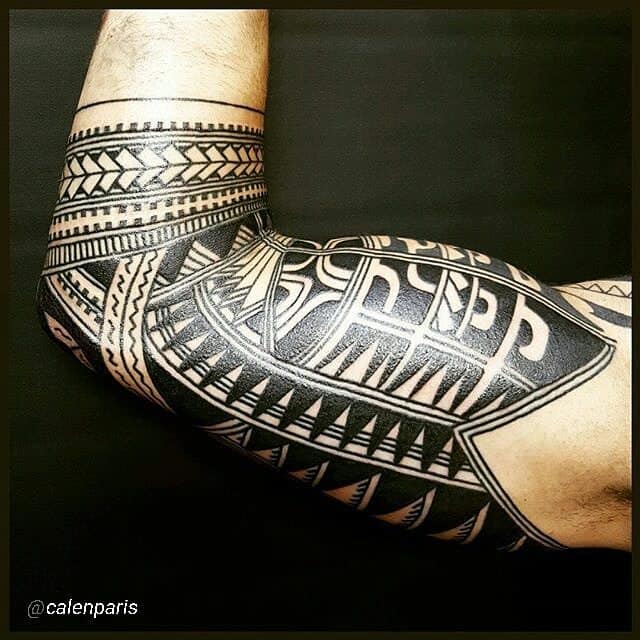
The Maori
The Maori people are the indigenous Polynesian people of New Zealand.
Polynesia, meanwhile, is the collection of over a thousand islands spread over the central and southern Pacific Ocean. The area is often referred to as the Polynesian Triangle – marked on a map by connecting Hawaii, Easter Island, and New Zealand.
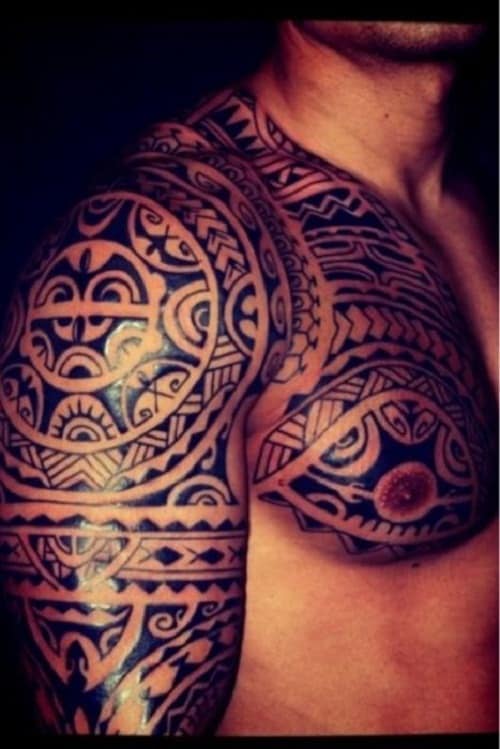
The Maori originated from eastern Polynesia and arrived in New Zealand in the first half of the 14th century, sometime between 1320 and 1350.
Because the Maori have spent their first few centuries in New Zealand in isolation from other Polynesian tribes, their culture has developed independently. This means that the mythology, language, practices, and art is distinctly different from those of other Polynesian peoples.
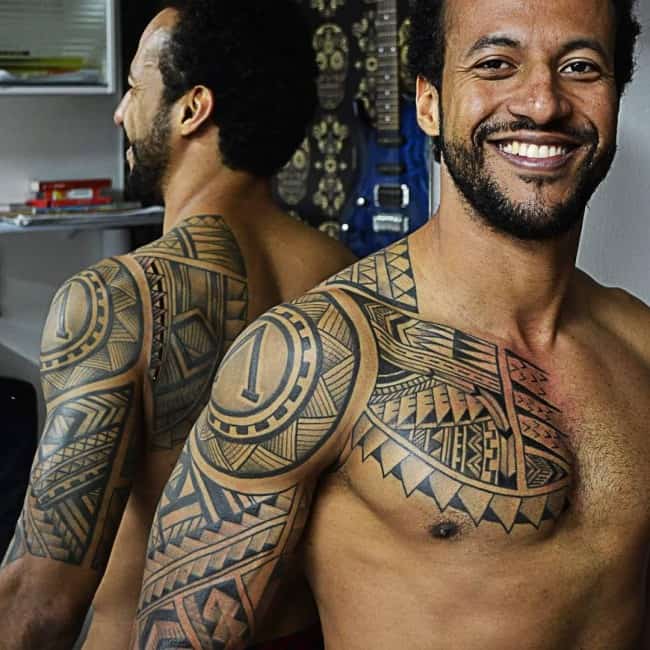
The Maori’s life in New Zealand changed with the arrival of Europeans in the 17th century. Initially the two cultures co-existed peacefully, and the Maori adopted many elements of Western society.
As is usually the way, though, conflict happened eventually, mostly over land ownership disputes – leading to land confiscations, social upheaval, and a number of epidemics.
This resulted in a dramatic fall in the Maori population. Still, the Maori and their culture have survived the many changes, and today there around 730,000 Maori people in New Zealand, and over 150,000 elsewhere in the world, primarily in Australia.
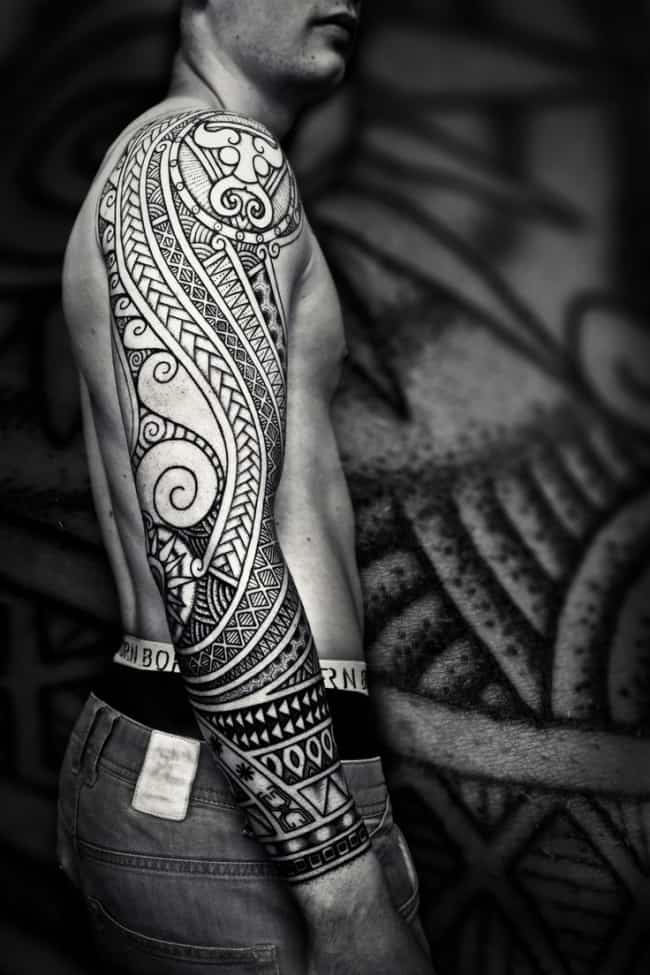
Maori tattoo tradition
Tattooing is an integral part of the Maori culture. The process of a person receiving a tattoo involved a series of rituals – particularly prior to the arrival and interference of Europeans. The traditional Maori tattoo practice is known as ta moko.
Since the head is believed to be the most sacred part of the body by the Maori, ta moko was most often done on the face.
These traditional facial tattoos involve the use of curved shapes and spiraling patterns. Either the pattern itself is tattooed, or the design blacks out the background to create a negative-space pattern.
Apart from tattooing the face, men also often wear tattoos on their thighs, arms, and buttocks. Women usually have tattoos on their chin and lips.
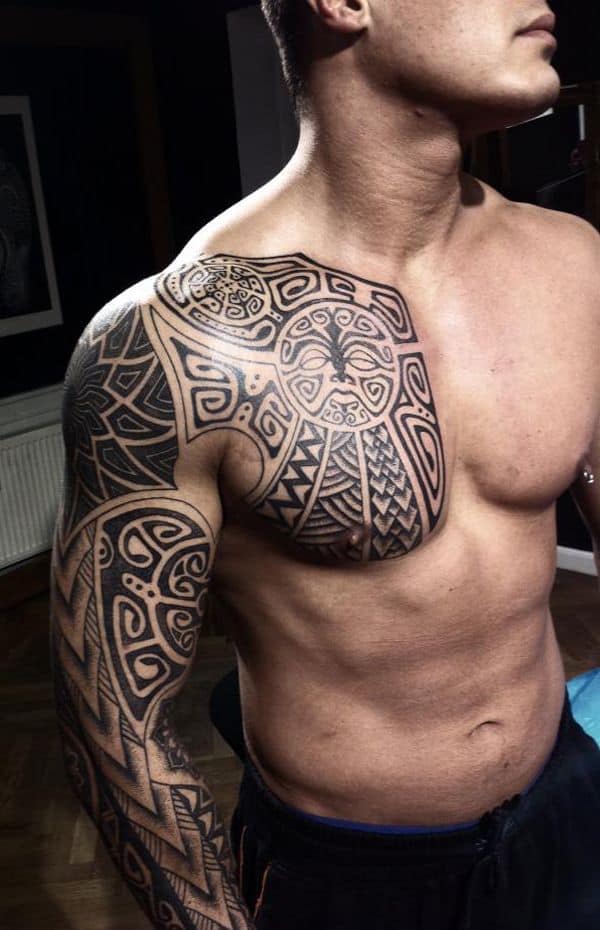
Ta moko instruments and method
Traditional Maori tattoos were performed using a different – and much more painful – technique than that we adopt today. Rather than using needles, the Maori used chisels and knives, usually made out of shark teeth, sharpened albatross bones, stones, and according to some sources, iron.
The chisels would be struck with a mallet to puncture the skin, and knives would be used to create longer cuts. Tattooists used both smooth and serrated chisels and blades, depending on the pattern and the effect they were aiming to achieve.
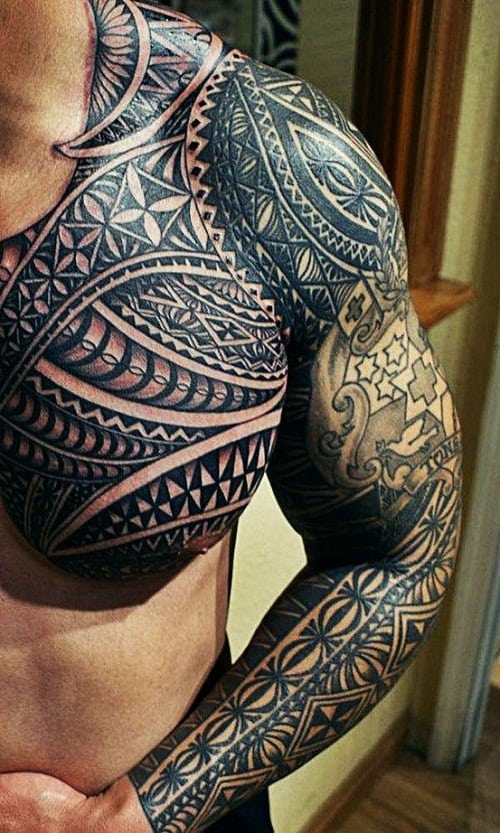
The punctures and cuts to the skin were then dyed with a variety of inks crafted from natural materials. Pigments were mixed with animal fat to achieve a smooth, liquid consistency. Black pigments were derived from burnt wood. Lighter colors were achieved through the use of burnt kauri gum and from caterpillars and other insects.
Naturally, this process was incredibly painful and was therefore often done in stages, allowing the skin to heal in between ‘sessions’.
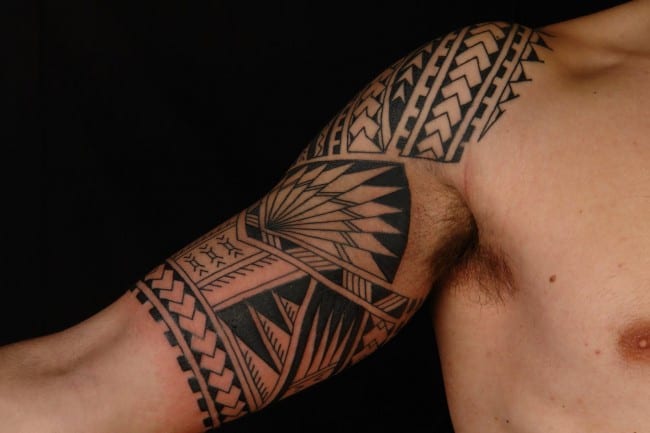
Due to the use of chisels rather than needles, the Maori tattoo method results in grooves in the surface of the skin, where the cuts have healed. Rather than being smooth like after a modern tattoo, therefore, the skin would be textured, as well as dyed, in accordance with the pattern.
Nowadays, some Maori people continue the tradition of wearing facial tattoos, although these are more often done using modern tattoo guns. The practice of traditional ta moko hasn’t died out entirely, though, as there are some reports of some groups still engaging in tattooing using the chisel method.
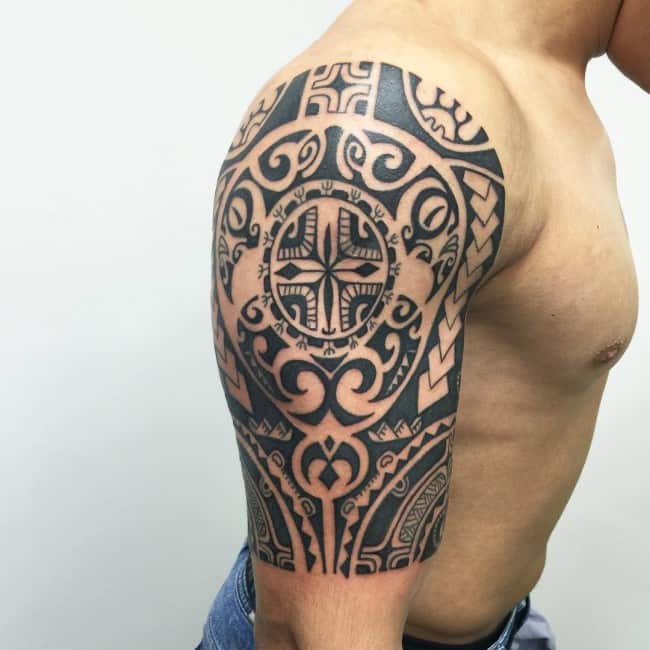
The mythology behind ta moko
The high significance of tattoos in the Maori culture is probably best proven though the fact that there is a whole legend dedicated to how ta moko came about.
According to Maori mythology, there was once a young man, Mataoroa, who fell in love with a princess of the underworld, Niwareka. The couple got married and Niwareka departed the underworld to be with Mataoroa on earth.
Mataoroa mistreated his new wife, though, and she returned to her father in the underworld. Fraught with grief and regret at the loss of his wife, Mataoroa decided to follow her.
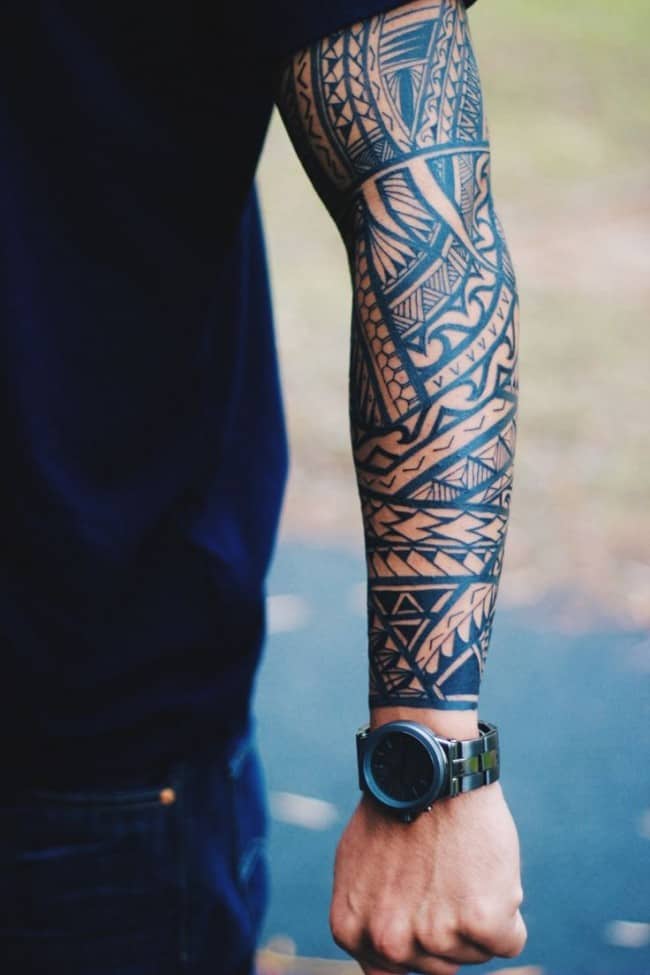
He entered the underworld and after many trials and challenges reached his wife’s father. Upon arrival, he found himself mocked by the inhabitants of the underworld: his warrior’s face paint had smeared and smudged during his journey. In the legend, this was back when on earth only impermanent face markings were known.
Impressed with the young man’s dedication to gaining his wife’s forgiveness, Niwareka’s people taught Mataoroa the art of ta moko – marking the face in a permanent way. Niwareka forgave her husband and they returned to earth together, to share the secrets of ta moko with the rest of the Maori.
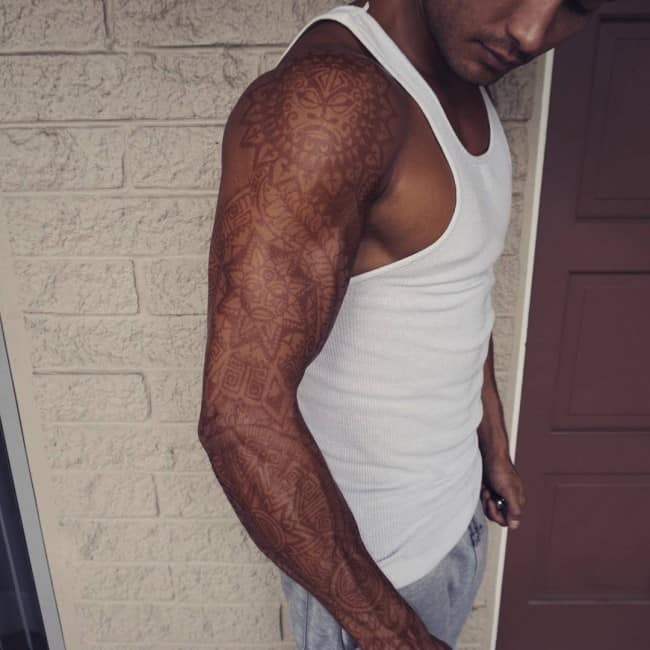
Maori tattoo placements
According to some sources, there is a meaning to the specific areas of the face in which elements of the design appear. In traditional Maori facial tattoos, these are alleged to be:
- Center of the forehead – refers to the person’s overall rank within the social group
- Under the eyebrows – position
- Around the eyes and nose – sub-tribe rank, known as hapu
- Around the temples – marital status, including the number of marriages the person has had
- Under the nose – on a man, the tattoo in this area would be his signature – memorized by tribal chiefs who used it when signing deeds, orders, and buying property
- Cheeks – the person’s profession
- Chin – the person’s mana – refers to prestige or authority
- Jaw area – the person’s birth status, often including reference to maternal and paternal lineages
As you can see, Maori facial tattoos virtually tell the person’s entire life story. This is one of the many reasons why it’s crucial to be careful when choosing a Maori tattoo – you could inadvertently end up saying something about yourself that you really, really hadn’t intended to say!
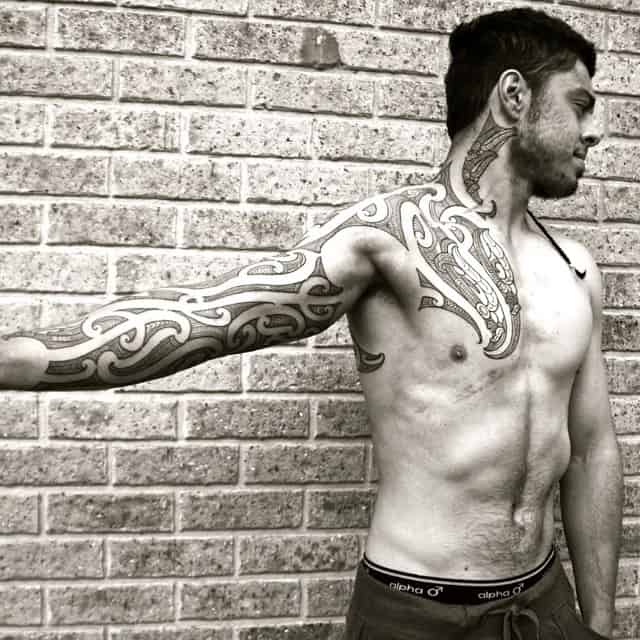
It’s also important to note that in general, facial Maori tattoos are reserved for Maori people nowadays – they are an integral part of their cultural identity and traditions.
Non-Maori individuals wishing to get Maori-style tattoos are usually advised to consider other placements in order to avoid coming across as offensive or insensitive. We’ll get back to the subject of cultural sensitivity in Maori tattoos later on.
Maori tattoo symbols
Maori tattoo meanings are designated not only by the exact placement, but also by the patterns and shapes used.
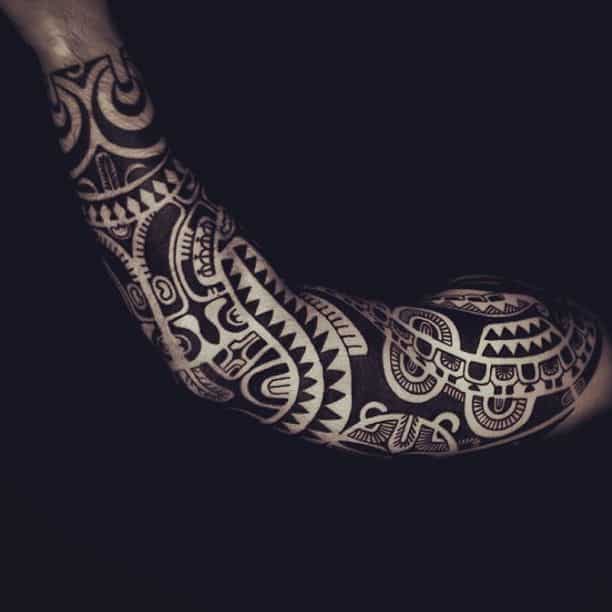
Manuah vs koru
In traditional Maori tattoo art, the elements used in the tribal, abstract patterns are known as either manuah or koru.
The manuah is the main outline of the tattoo. The word itself means ‘heart’. These main lines are representative of a person’s life journey, including both past achievements and plans for the future.
Korus are spiral shapes that branch off the manuah lines.
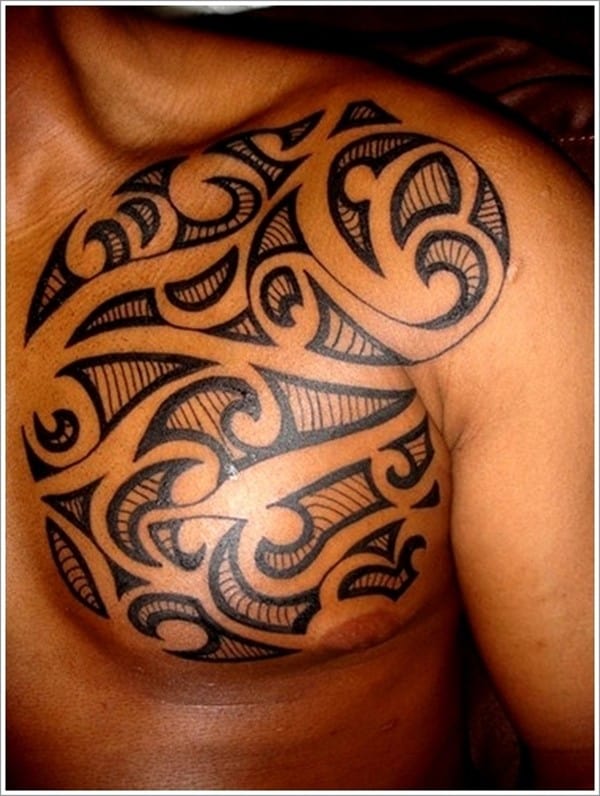
Spiral – koru
Koru takes the shape of a simple spiral. It takes its form from an unfurled fern leaf, and as such it means growth, new beginnings, and harmony. Depending on the overall pattern used in the design, each spiral can also represent a family member or loved one.
Fish hook – Hei matau
This symbol takes on the appearance of a semi-abstract, stylized fish hook – looking a bit like an incomplete number 8 or the & sign.
Fish was one of the main sources of sustenance for the indigenous Maori people, and remains one of the key ingredients in many traditional dishes. As such, it’s unsurprising that it means prosperity and good health.
Through its obvious connection with the ocean, this symbol also means safe journey over water.
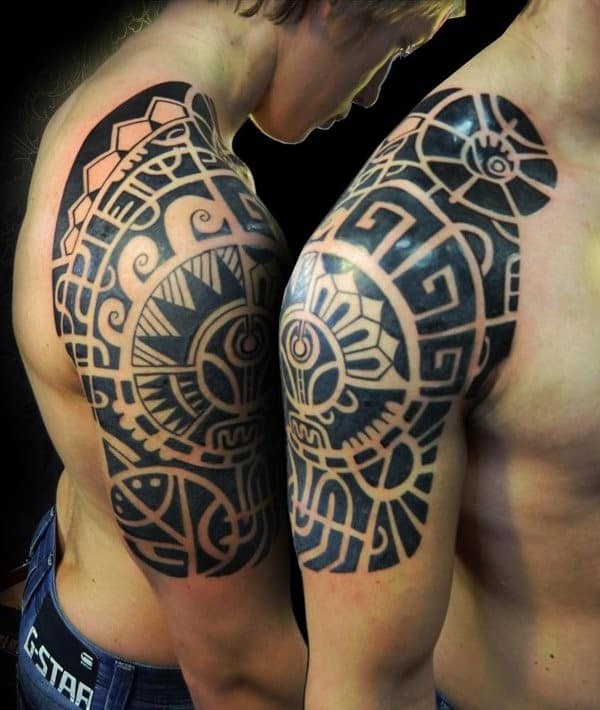
Single twist – Pikorua
Taking the shape of the number 8, this symbol means the path of life. It also stands for eternity – just like the infinity symbol used in mathematics and in other cultures, which also looks like an 8. The difference is that the infinity symbol is usually represented horizontally – an 8 on its side.
Double and triple twists
Shaped like the number 8, except with an additional ‘twist’ or two, this symbol represents relationships.
The twists are symbolic of unity between two people, groups, or cultures. Because the twists are part of a symbol already associated with infinity, this joining is believed to last for eternity. Eternal love and friendship are the key meaning behind this element.
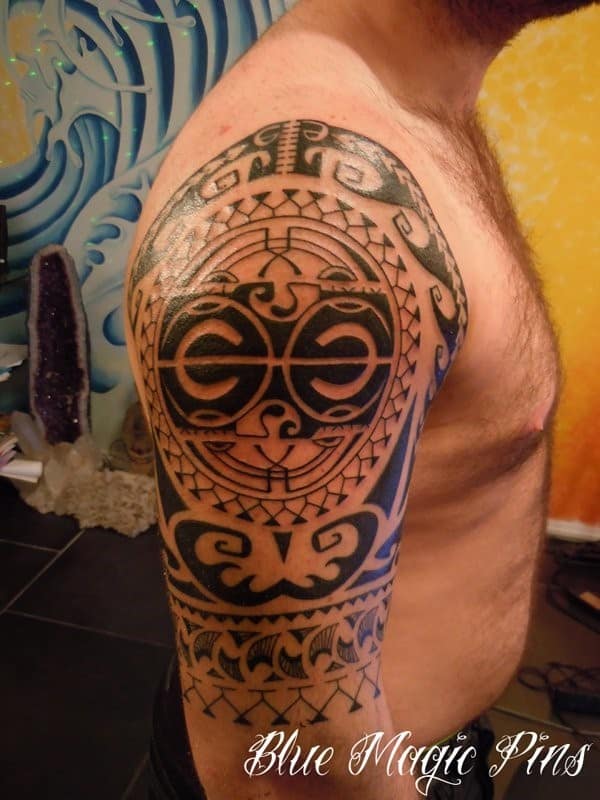
Manaia
The manaia is a popular element of Maori tattoos, ornaments, and carvings. Traditionally, the symbol was represented as a creature with the body of a man, tail of a fish, and the head of a bird. However, as time went on, there have been increasingly creative and liberal takes on the appearance of the manaia.
The manaia is believed to be a messenger between the living and the dead. What’s important is that it is always depicted in profile – because one half of the manaia is in the realm of the dead, and the other is in the world of the living. Hence, we can only see one side, as the other is facing a realm other than our own.
In tattoos and in the form of charms and jewelry, the manaia is worn as a protective charm. It’s believed to be a watchful personal guardian that will ward off evil and misfortune.
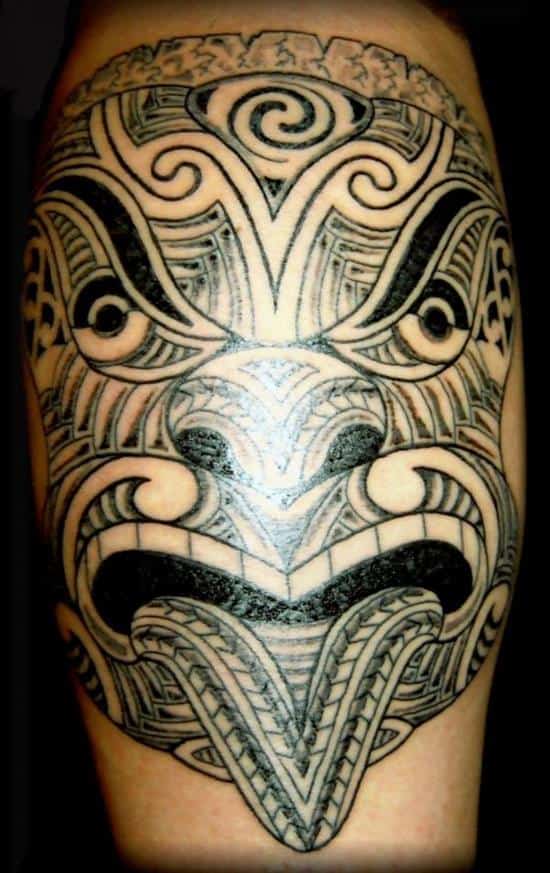
Hei-tiki
In Maori mythology, the first man is known as Tiki. Small carvings of the hei-tiki symbol – that of a humanoid figure with large eyes and a tilted head – were often worn as pendants. The most valuable hei-tiki were made of out greenstone (jade).
The hei-tiki symbolizes a connection with the wearer’s ancestors, and as such is a symbol of remembrance for deceased family members. It’s also thought to be a symbol of the Maori goddess of fertility, Hineteiwaiwa.
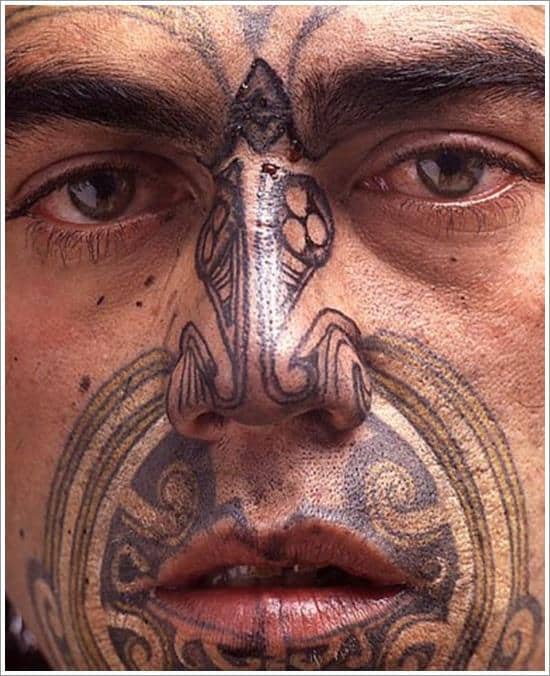
As well as being a popular choice for a tattoo, the hei-tiki as a pendant or other carving often made for a treasured possession within a family. The carving would be passed down the generation, increasing in importance the longer it remained within the family.
This custom is now largely in the past, but the hei-tiki remains one of the most recognizable symbols of the Maori culture. As such, when worn as a tattoo or jewelry, it signifies a person’s belonging to, or affinity towards, the Maori people and traditions.
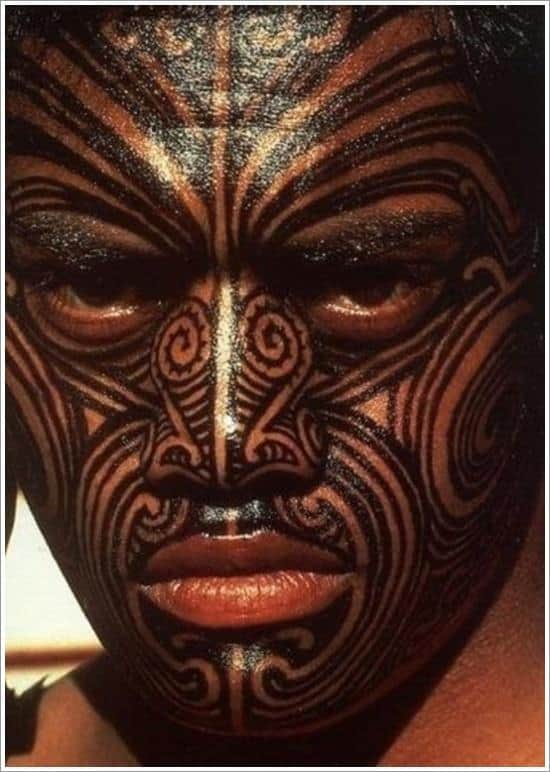
Maori tattoo patterns
In addition to using the above symbols, traditional Maori tattoos also incorporate complex patterns.
These patterns are used to fill in the black areas of tattoos – they add a further layer of meaning. Most of the patterns are placed between two double parallel lines, and the different in-fill shapes carry different connotations.
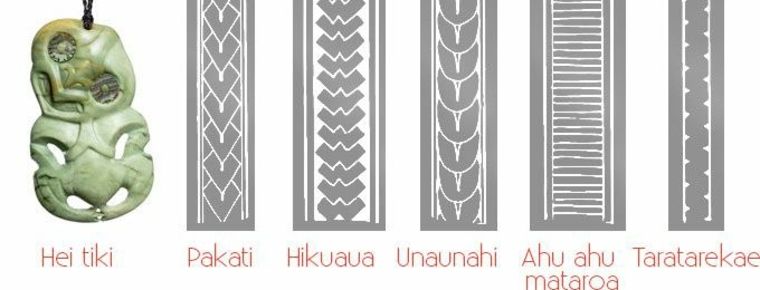
https://www.pinterest.co.uk/pin/847661961089349959/?lp=true
- Pakati – this angular pattern is commonly known as ‘dog skin cloak’. It symbolic of warriors and related concepts, such as battles and wars fought by the wearer. By way of secondary meaning, pakati also symbolizes the attributes ascribed to warriors – such as courage, strength, and honor.
- Hikuaua – another geometric pattern, hikuaua is meant to resemble the tail of a jack mackerel fish. Mackerels are abundant along the coast of New Zealand and are called hautere by the Maori people. The hikuaua pattern represents prosperity – a concept closely associated with fish and abundance of food in Maori history. It is also associated with the Taranaki region – an area in North-Western New Zealand, around Mount Taranaki.
- Unaunahi – this pattern, more rounded in shape than the two previously described ones, is meant to resemble fish scales. Once again, the connection to fish and fishing results in this pattern meaning prosperity, abundance, and health.
- Ahu ahu mataroa – this pattern is composed of straight lines and symbolizes talent and achievement in sport and athleticism. In addition, it can also mean a fresh challenge.
- Taratarekae – this pattern stands out from the others visually in that it is not placed between two sets of two parallel lines. Rather, the pattern itself takes the shape of two parallel lines, with what looks like small triangles protruding inwards from either line at regular, interlocking intervals. The triangles are a reference to whale teeth, and the pattern symbolizes sensitivity and strength.
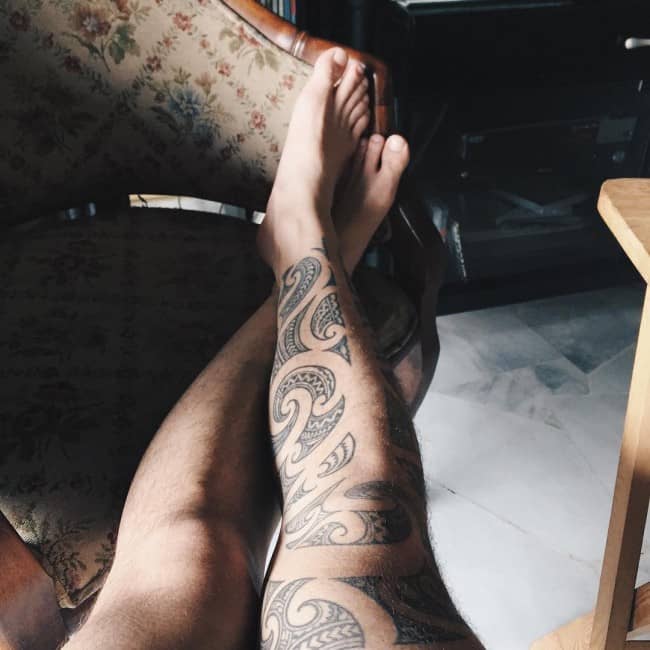
Controversy
Before we move on to the rest of our gallery of Maori tattoos, a word of caution: there is some controversy around the popularization of Maori tattoos and imagery. When traditional Maori tattoos are worn by non-Maori people, it can be viewed as cultural appropriation.
Cultural appropriation is where a core element unique to one culture is adopted by a member of another culture without permission and/or understanding, possibly misusing or misinterpreting the custom.
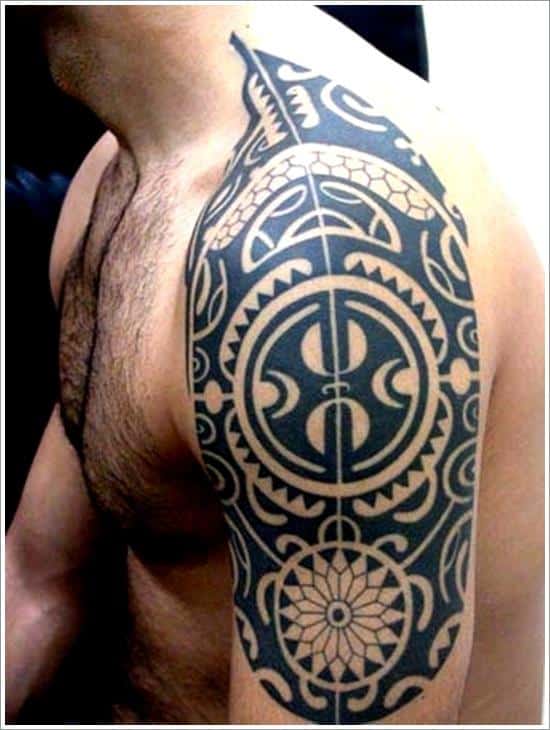
In recent years, there has been a controversy surrounding non-Maori people wearing Maori tattoos – exemplified by public personas such as Robbie Williams and Ben Harper, who both have Maori-style tattoos.
When using tattoo designs representative of a culture other than our own, it’s important to understand the implications and the meanings fully – and to do so in a culturally sensitive, appropriate way.
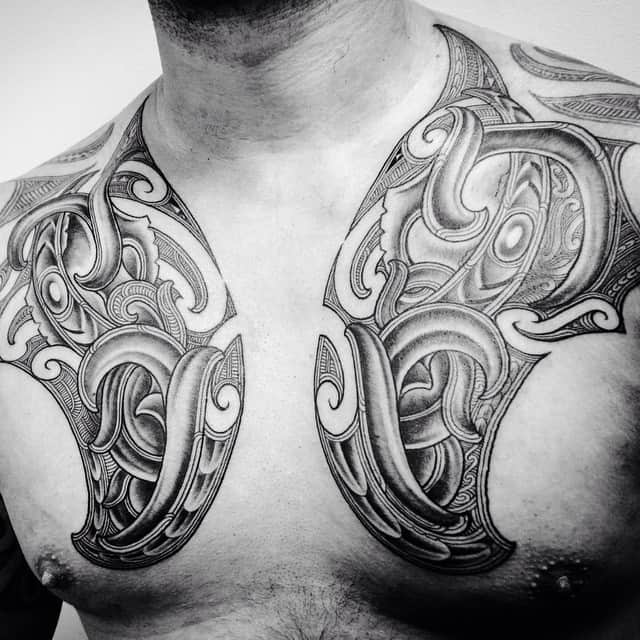
Ta moko vs kirituhi
Nowadays, a traditional ta moko requires a process of consents, historical information, and genealogic evidence – it is reserved for Maori people only. Meanwhile, Maori-inspired designs – those that match traditional ta moko in style but do not carry direct cultural meanings – are generally seen as acceptable without the need for genealogic affiliation with the culture. These are known as kirituhi, which literally means ‘drawn skin’.
The bottom line is that as a non-Maori person, you can still get a kirituhi – a Maori-style tattoo – provided that it is done with full understanding and in a culturally sensitive way.
It’s therefore important to do as much research about Maori tattoos as possible prior to getting one. Enlisting the help of a tattoo artist experienced in and knowledgeable about Maori-style tattoos is also an excellent idea.
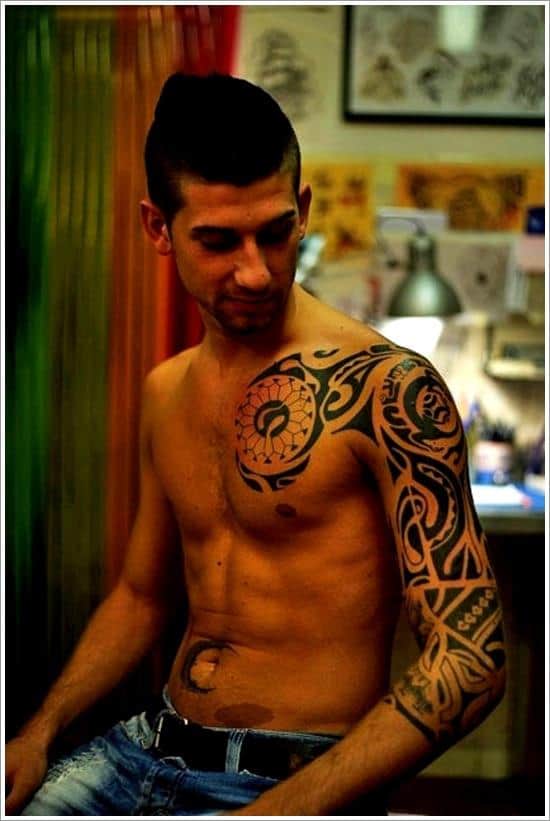
A number of tattoo artists based in New Zealand consider kirituhi to be their area of expertise. What’s great about working with such an expert on your tattoo is that the resultant design will be authentic, inoffensive, and representative of the exact meanings you wanted to convey.
Many of such artist work by asking you what your intended meaning, placement, and size are for the tattoo, then designing a unique pattern that will meet your requirements. This way, you can be sure that the tattoo is not only accurate, but also fully unique to you.
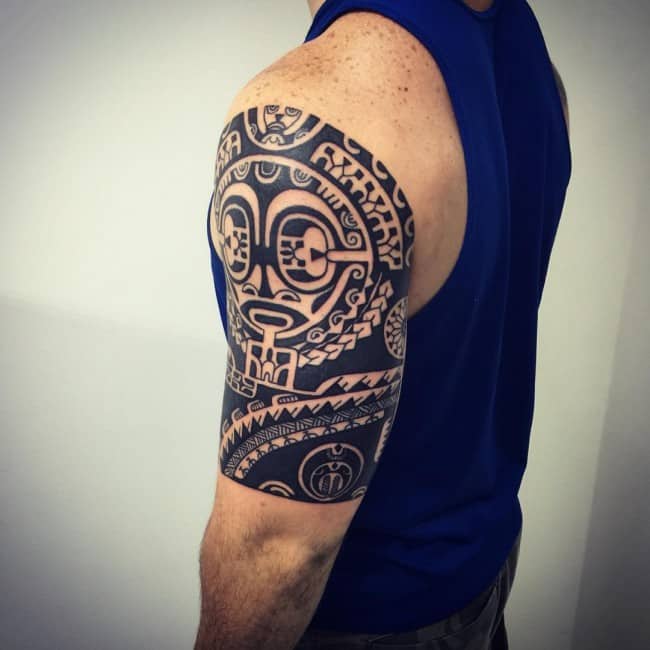
Final words
The Maori tattoo tradition is as complex as it is fascinating. The presence of so many different symbols and patterns with highly specific meanings means that designs comprised of these elements can tell a full story, rather than representing just one thing.
If you’re interested in reading more around the subject of tribal tattoos and seeing more great-looking designs in this style, check out our articles on Polynesian tattoos and on tribal tattoos in general.

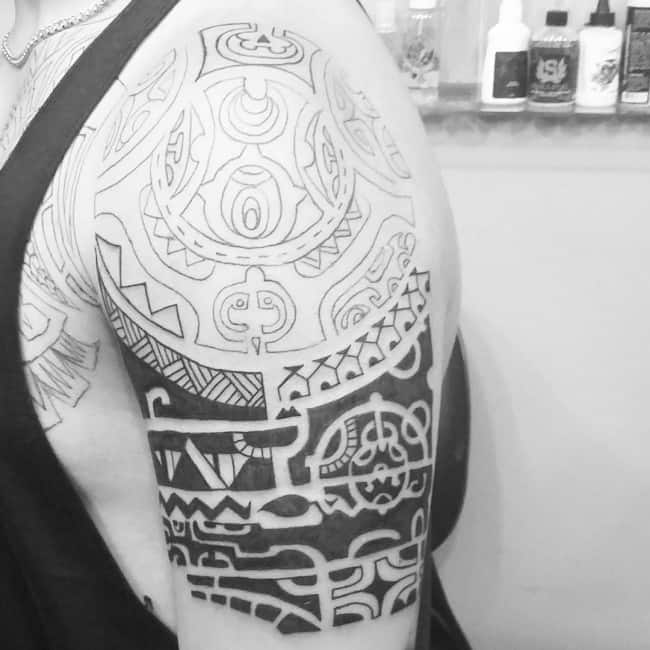
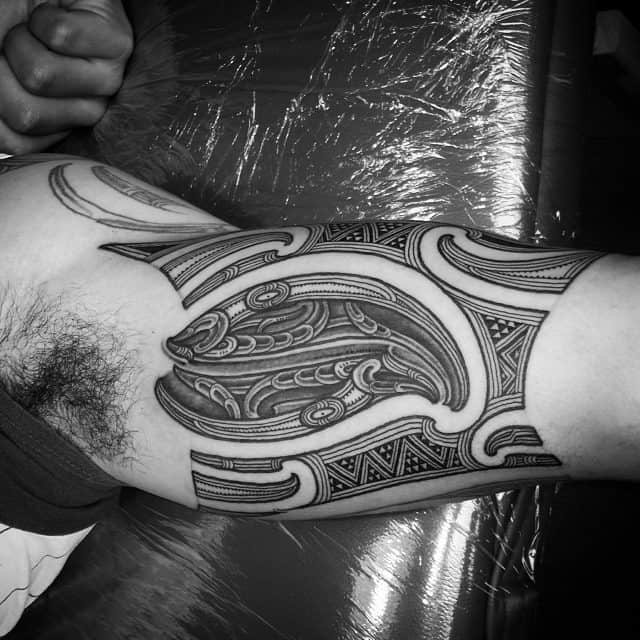
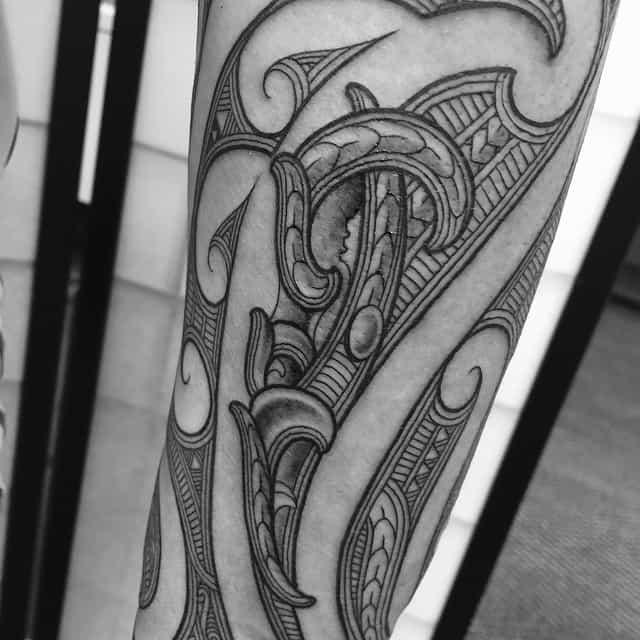
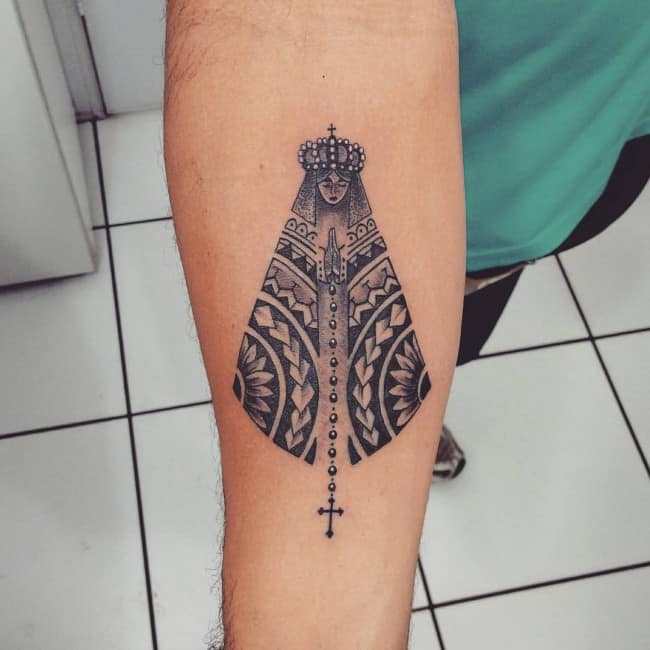
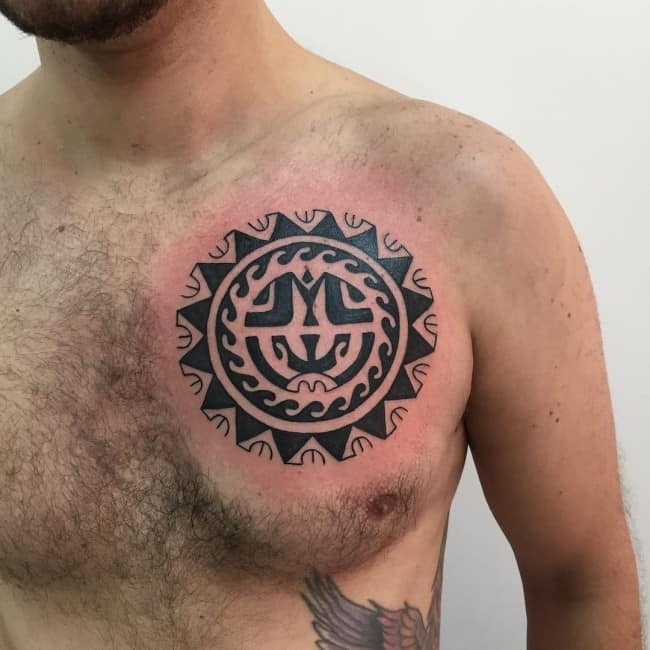
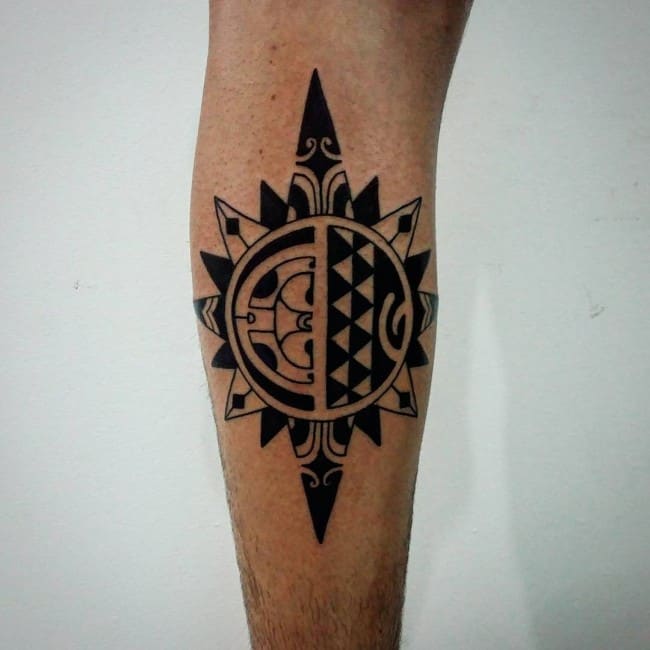
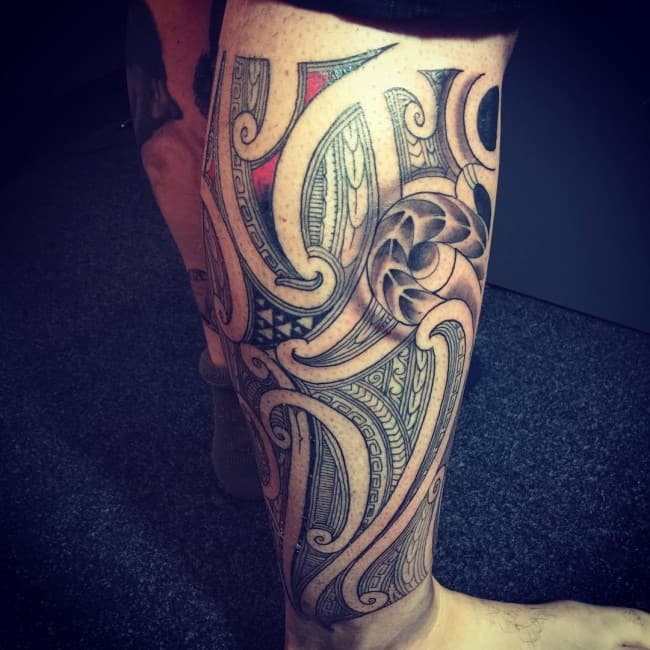
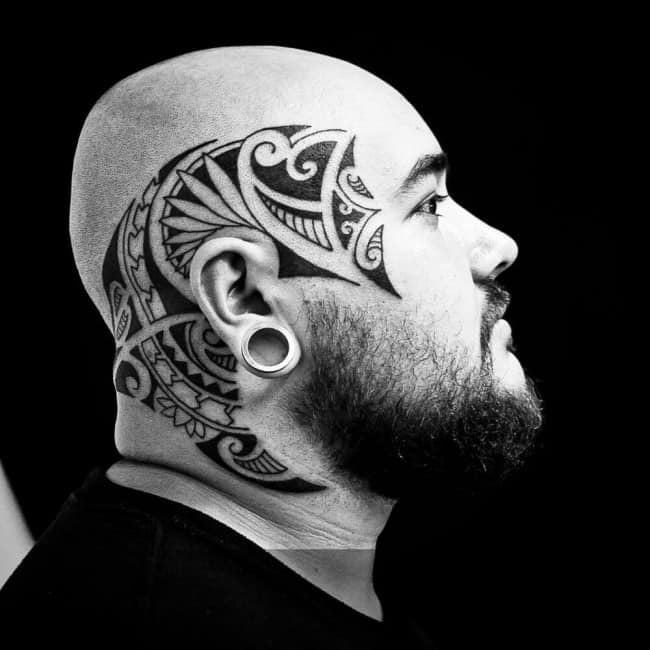
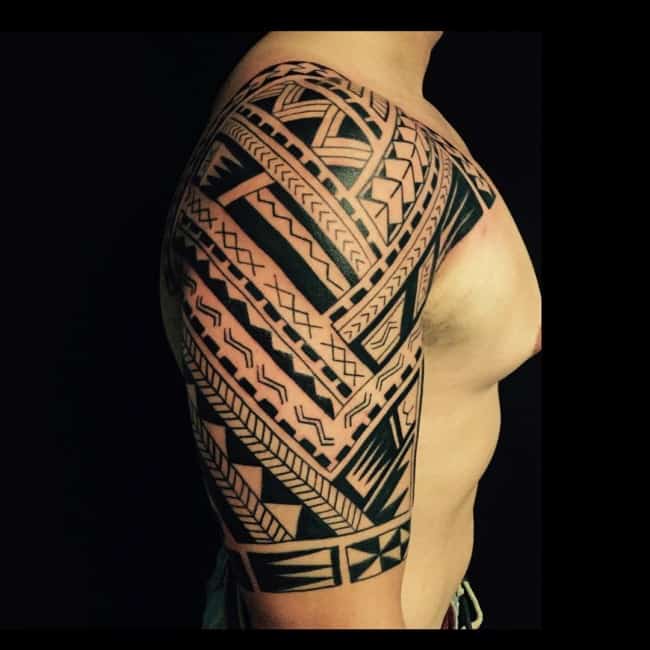
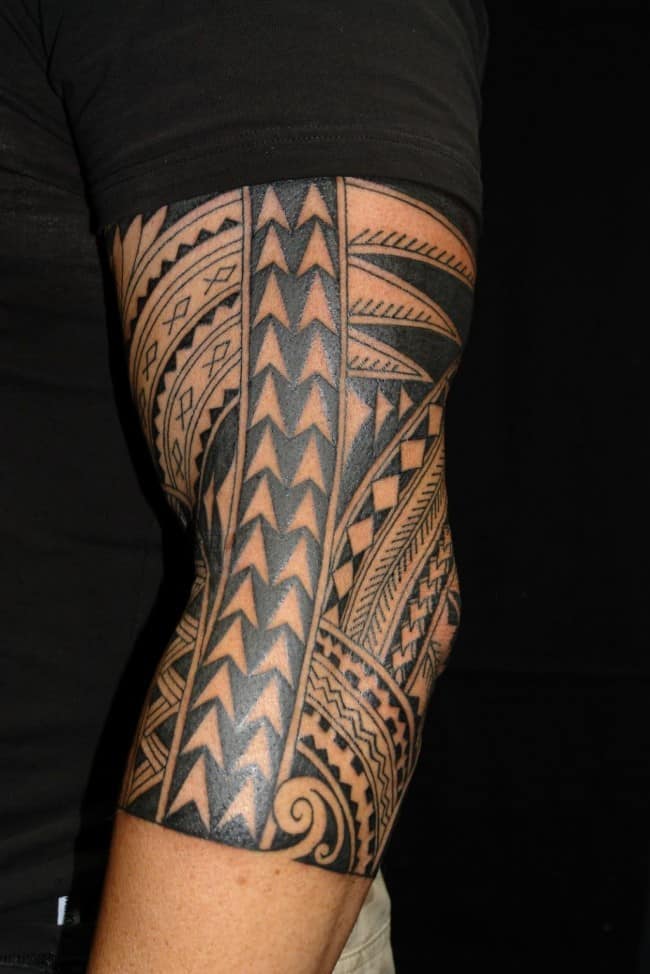
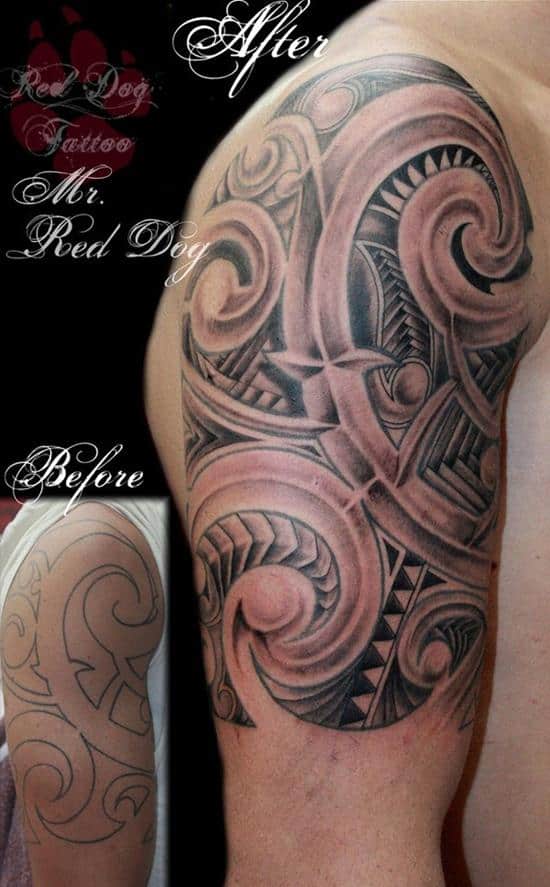
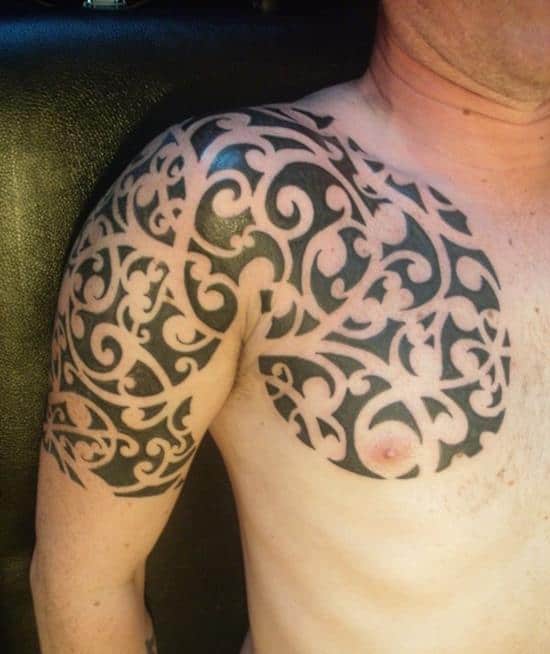
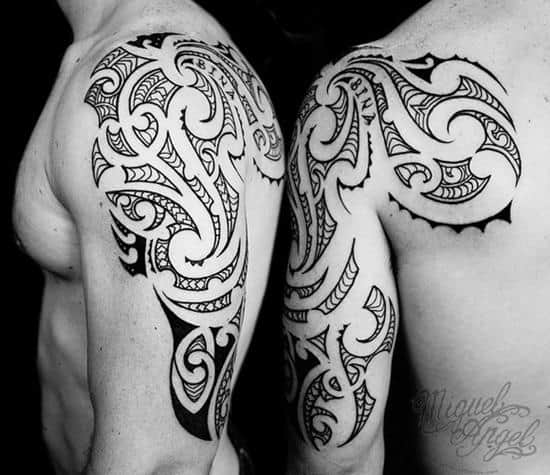
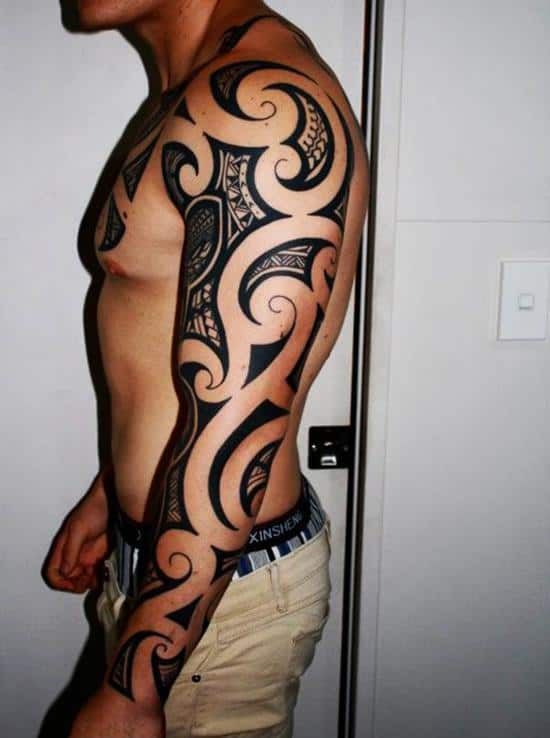
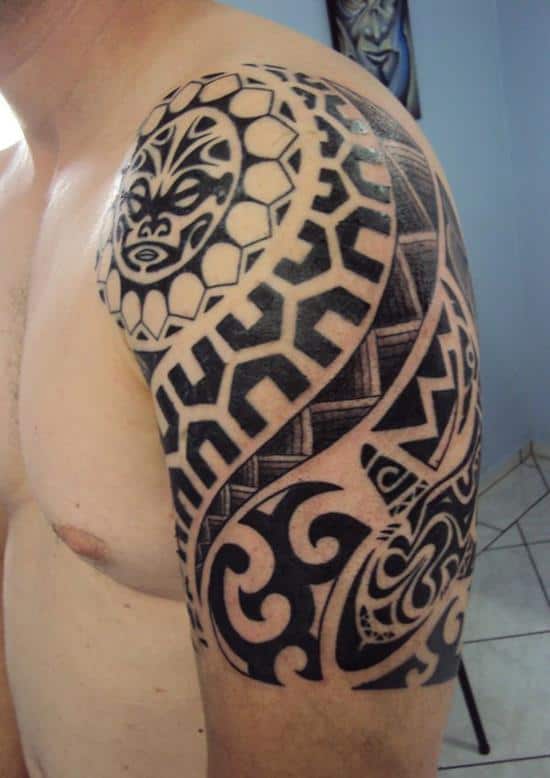
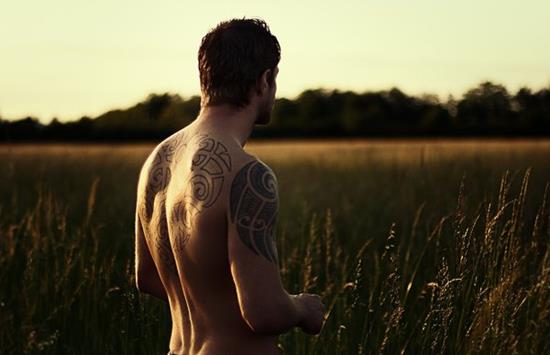
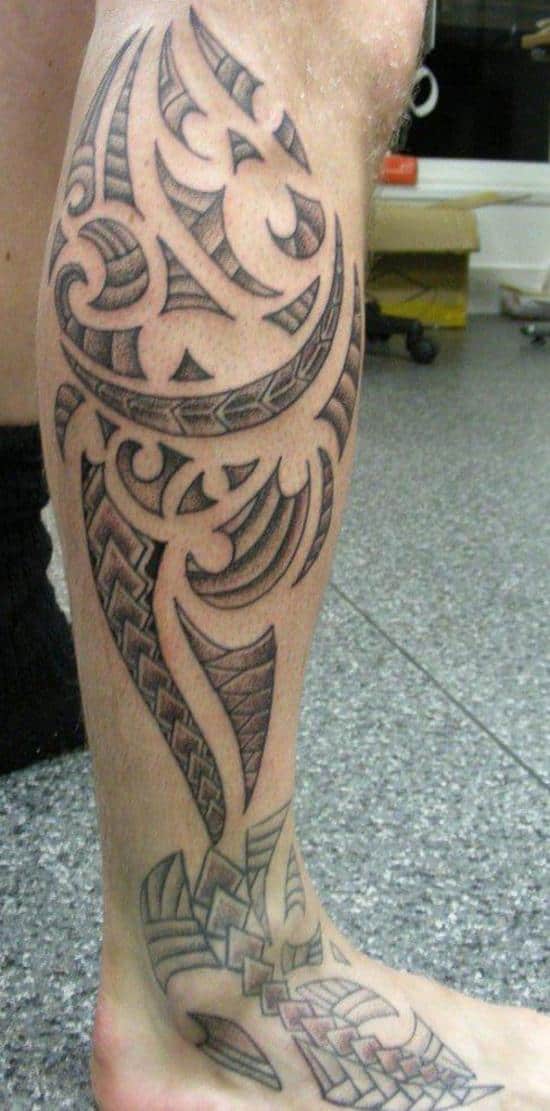
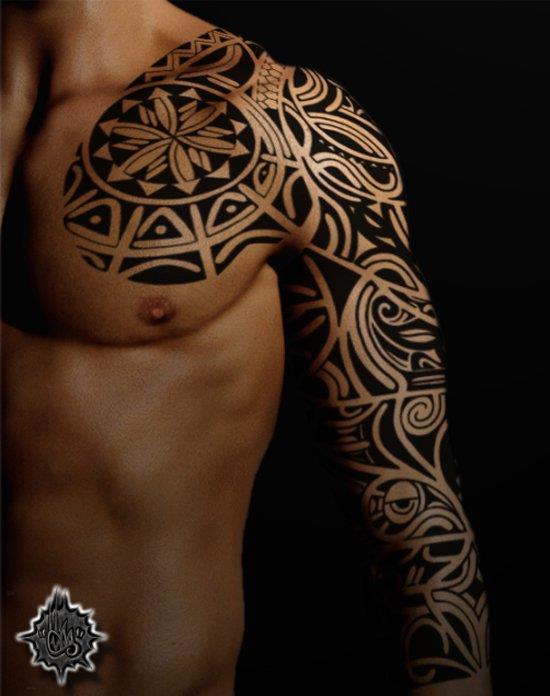


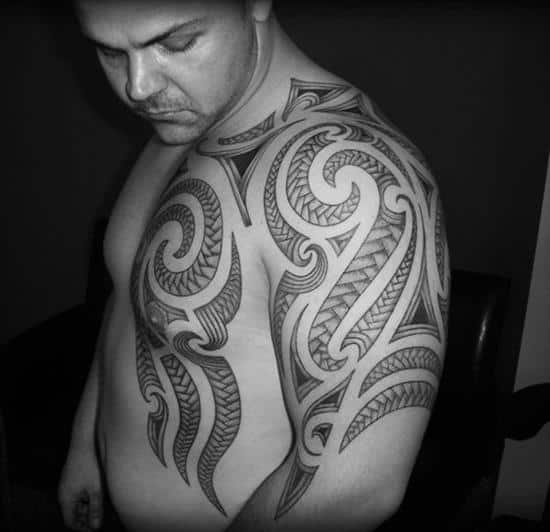
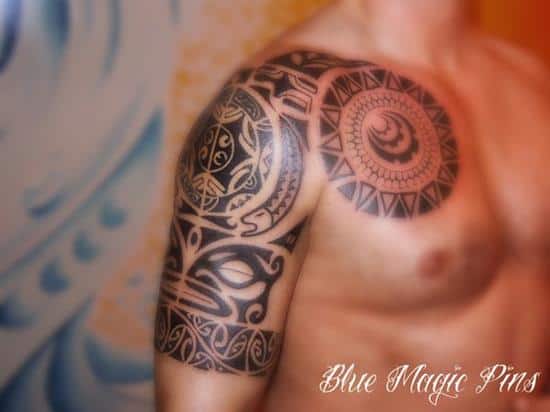
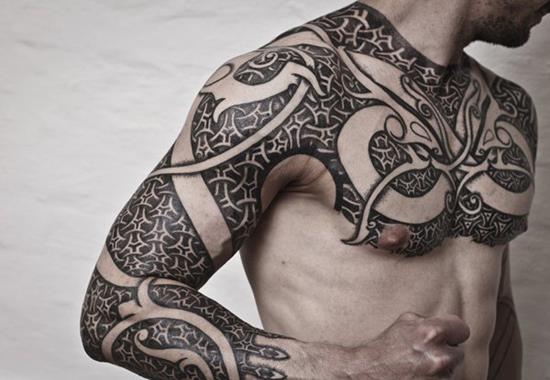
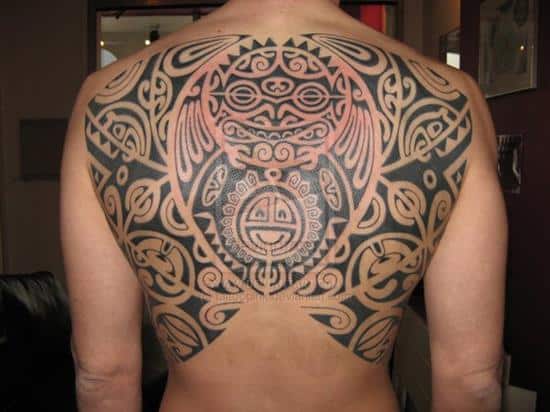
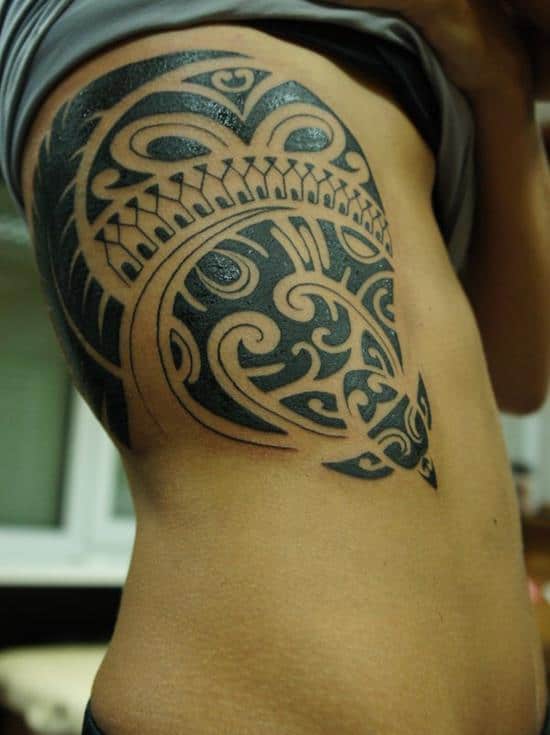
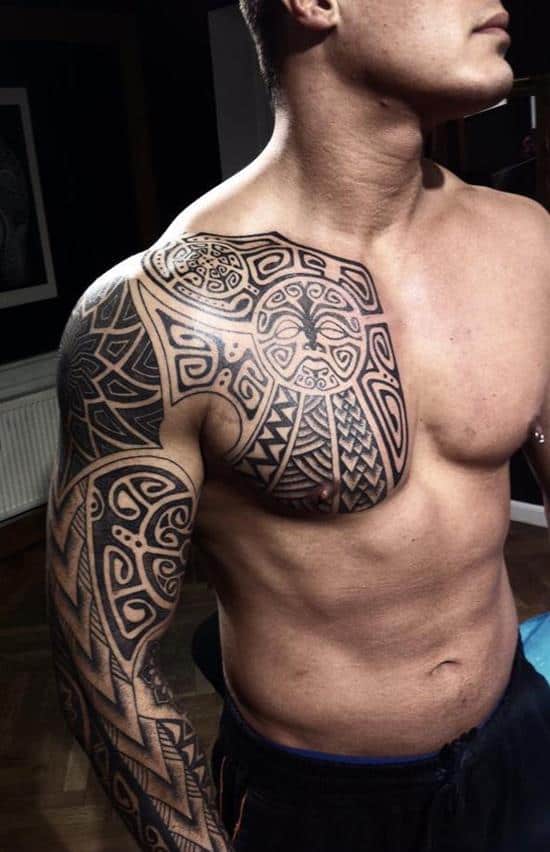
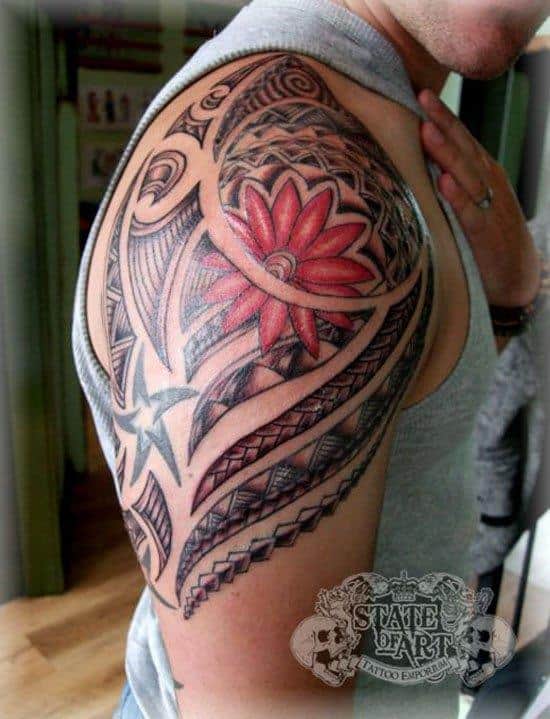
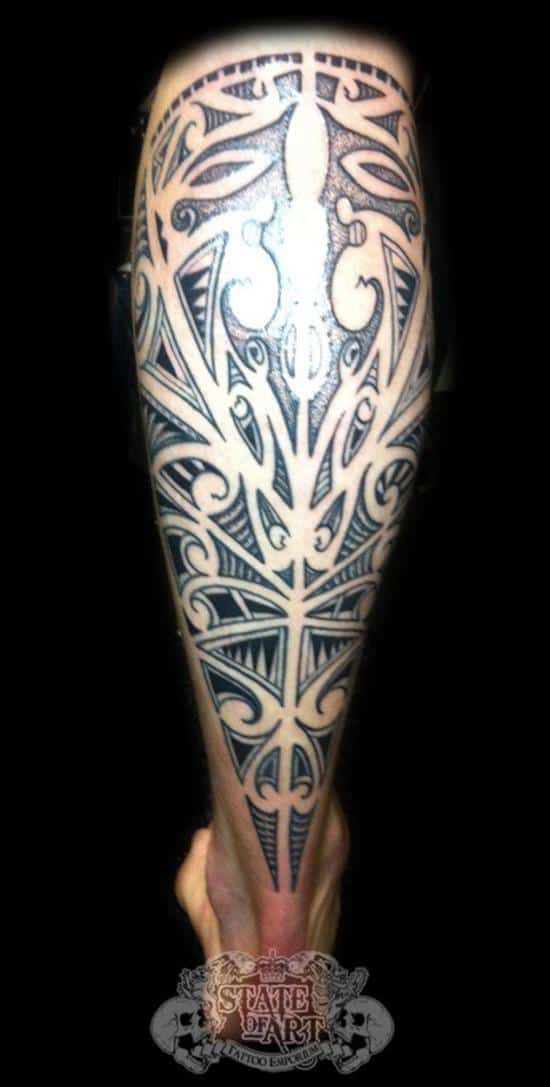
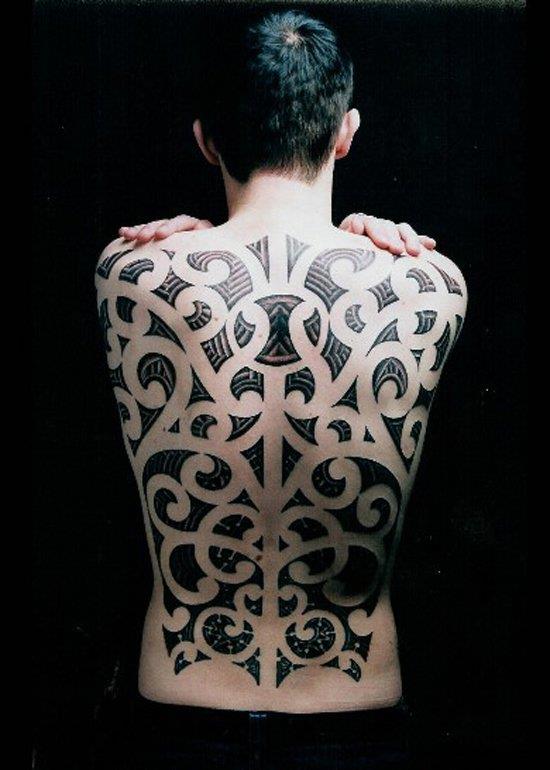
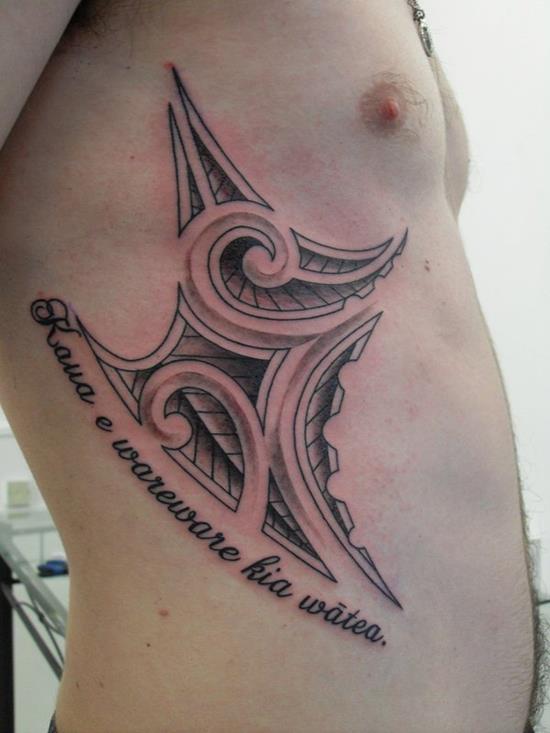
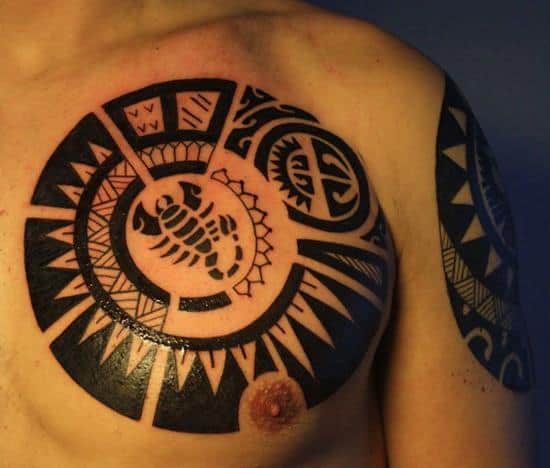
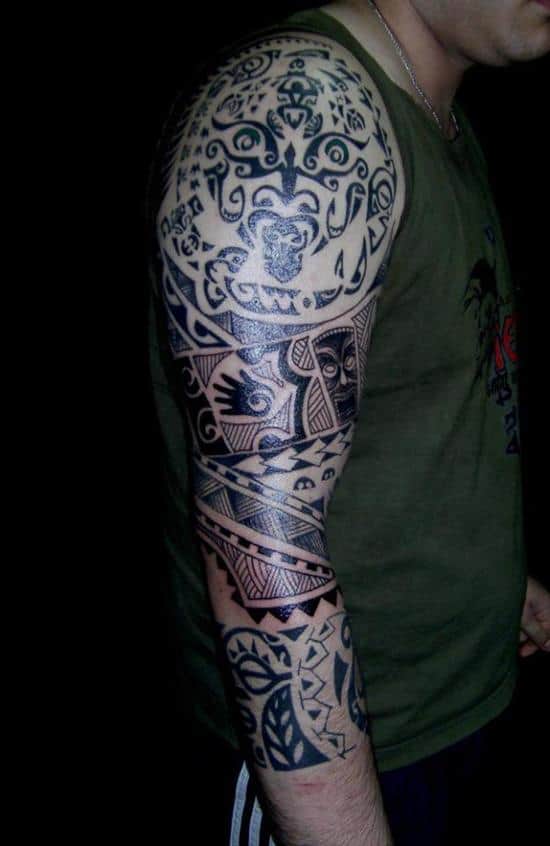
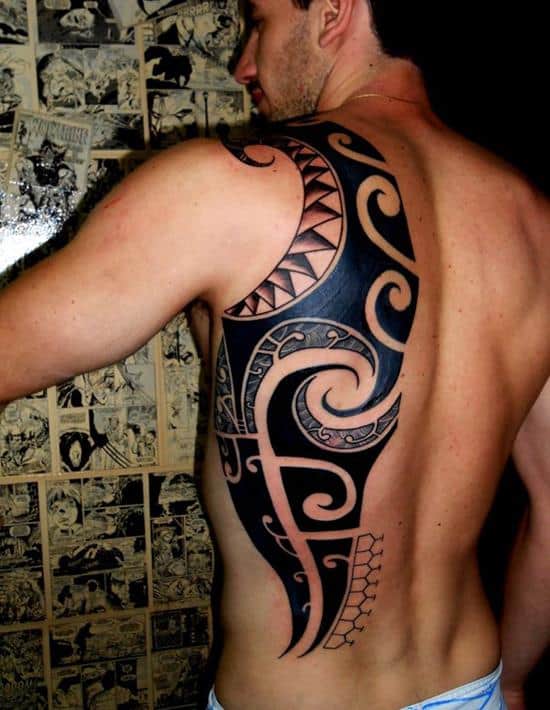

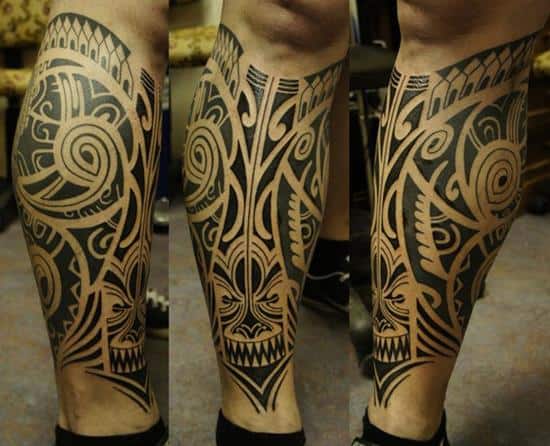
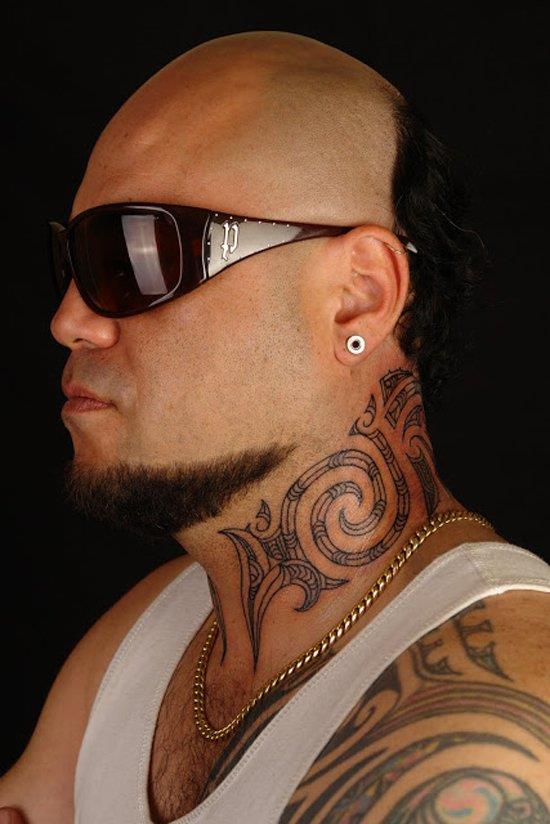

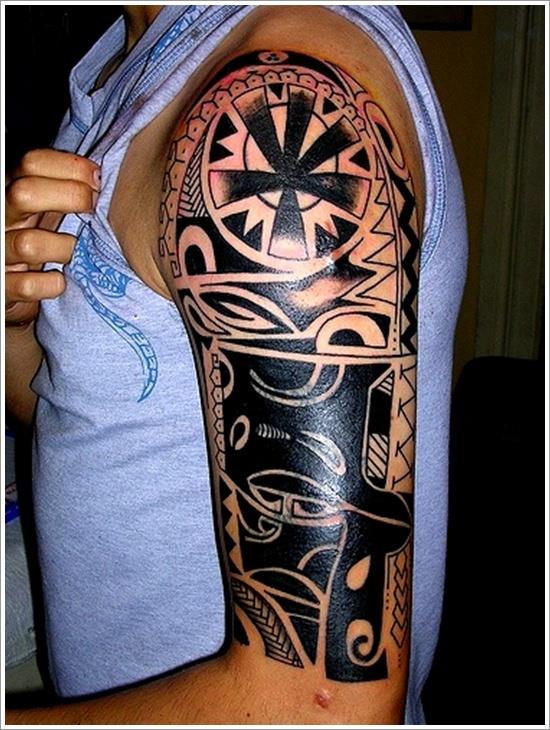
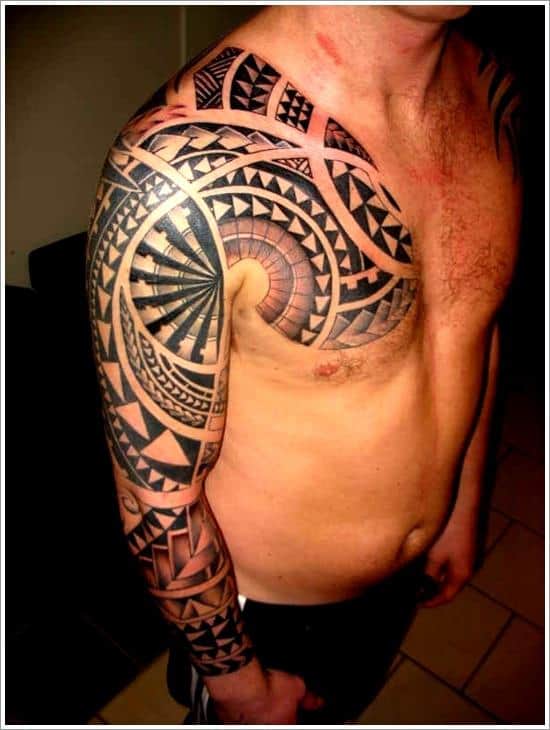
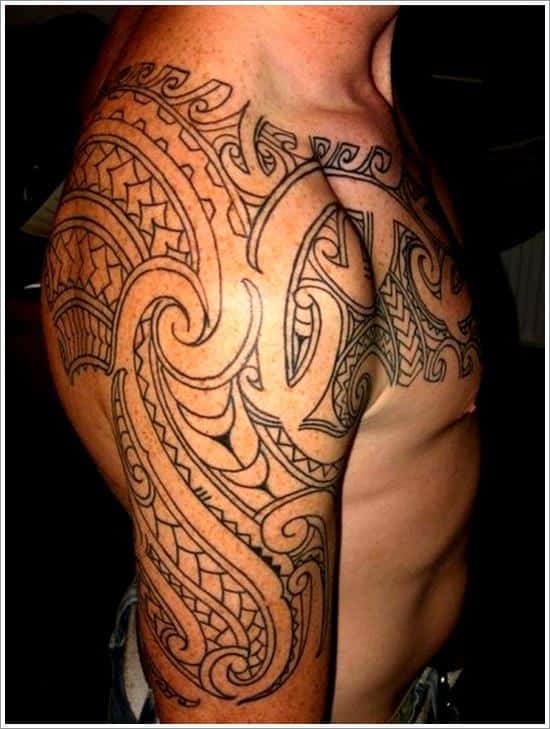
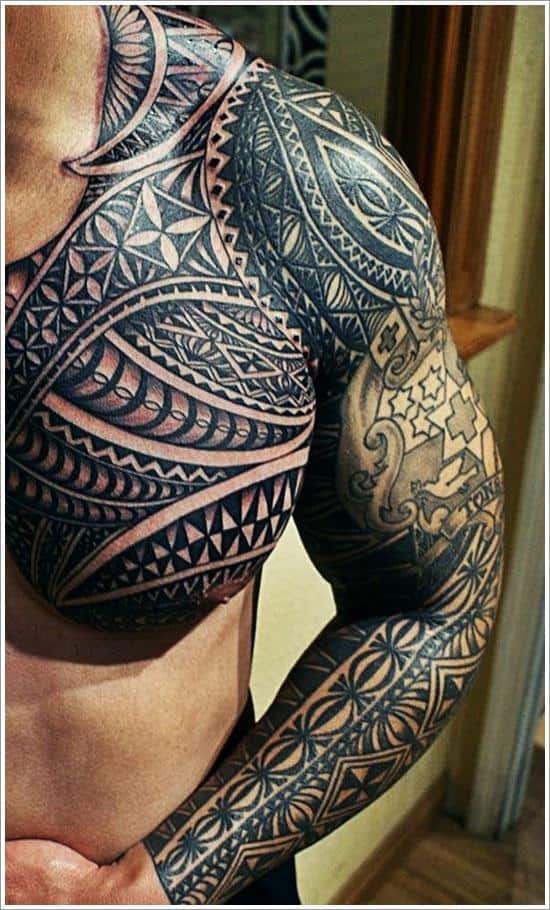
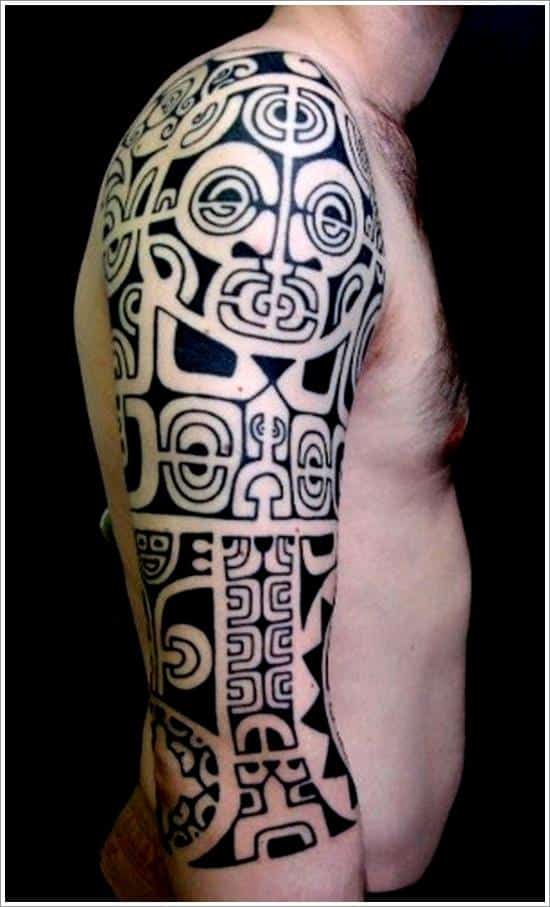
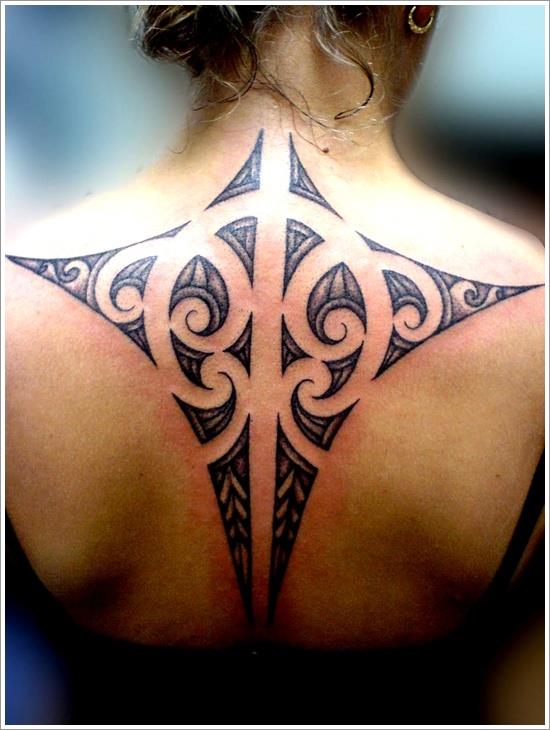
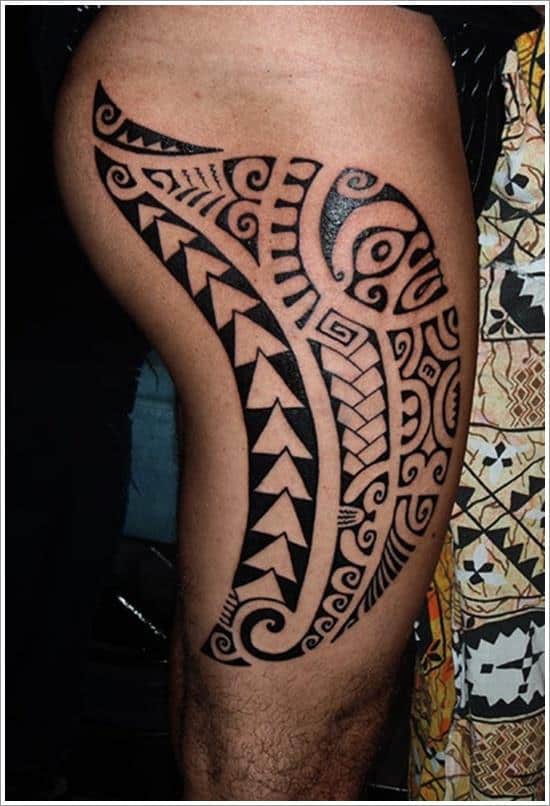

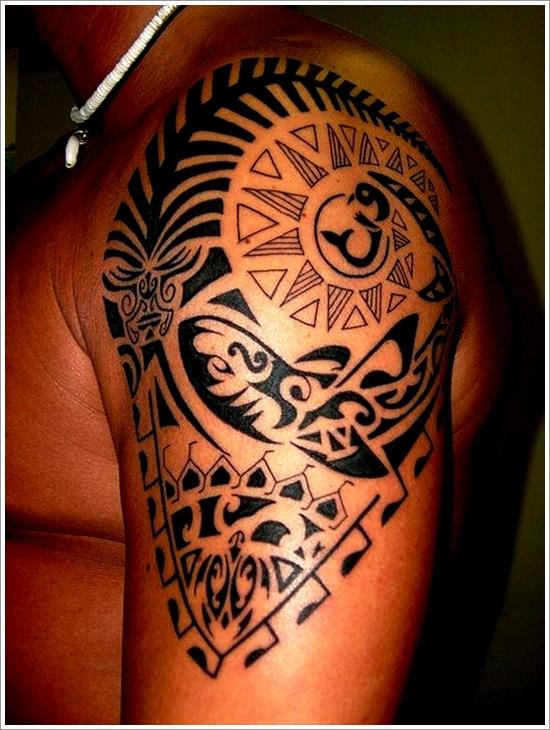

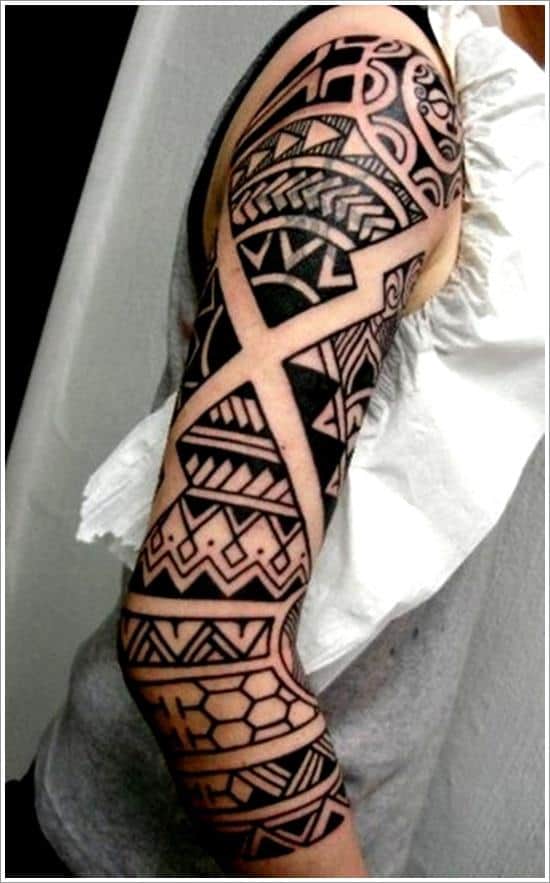
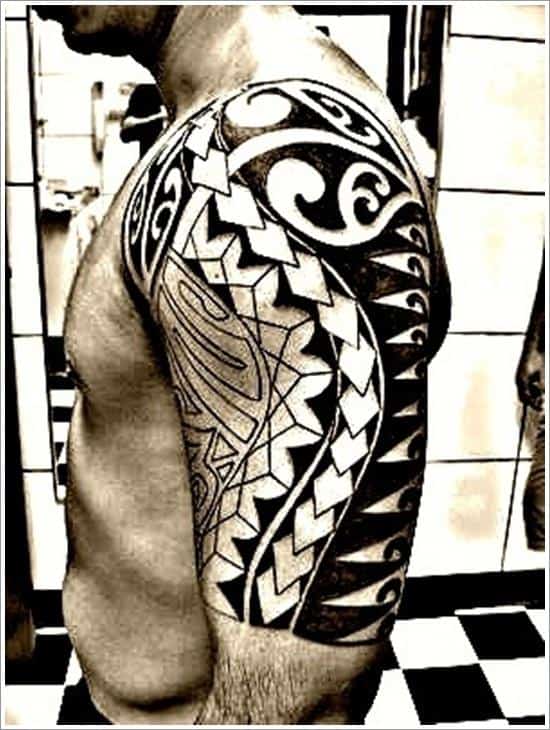
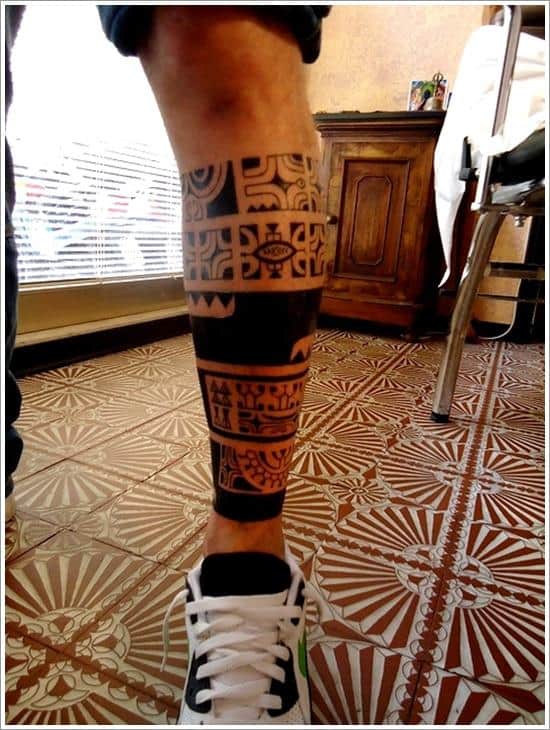

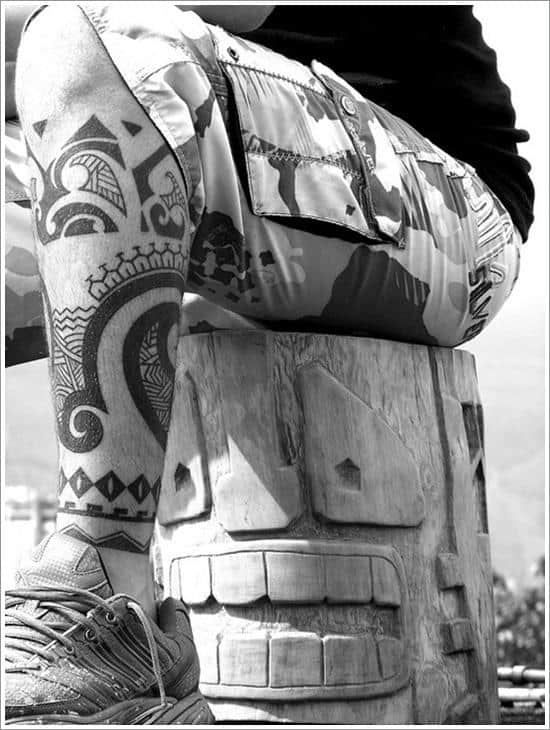
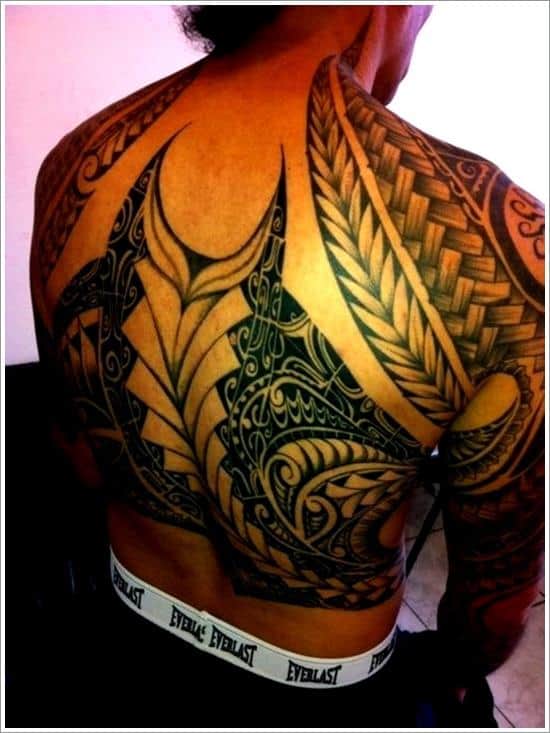

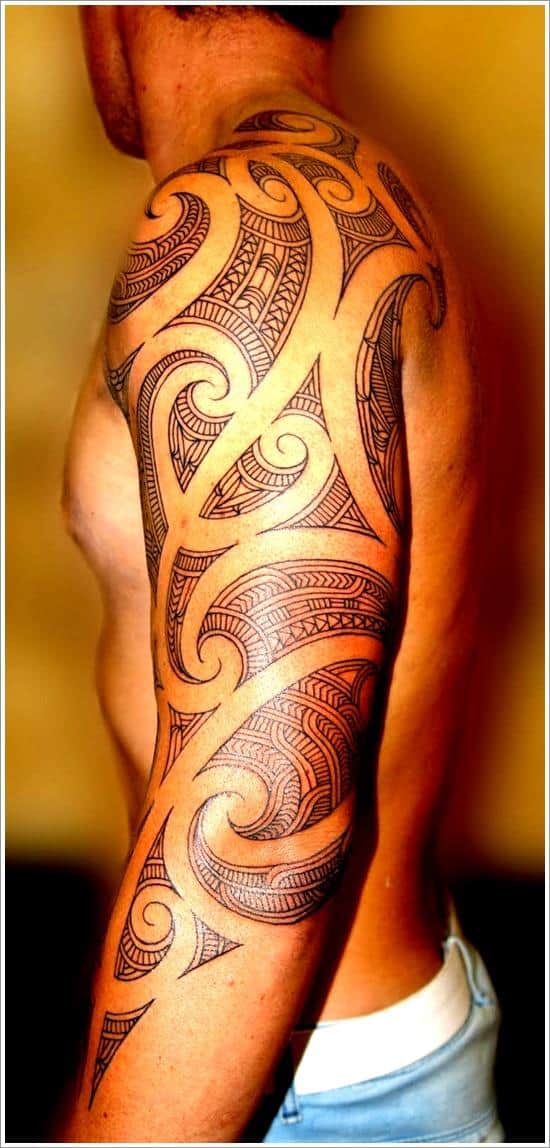
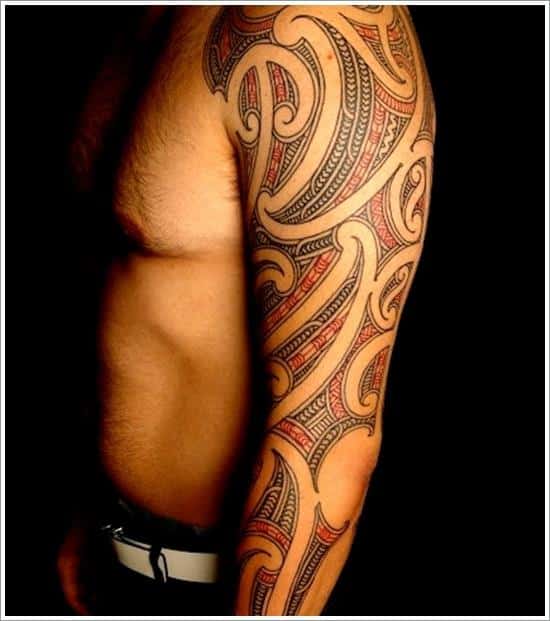
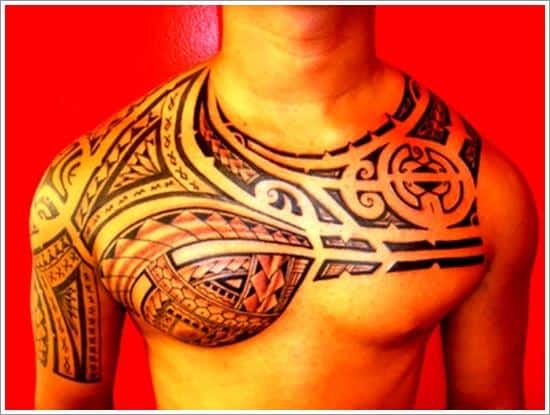
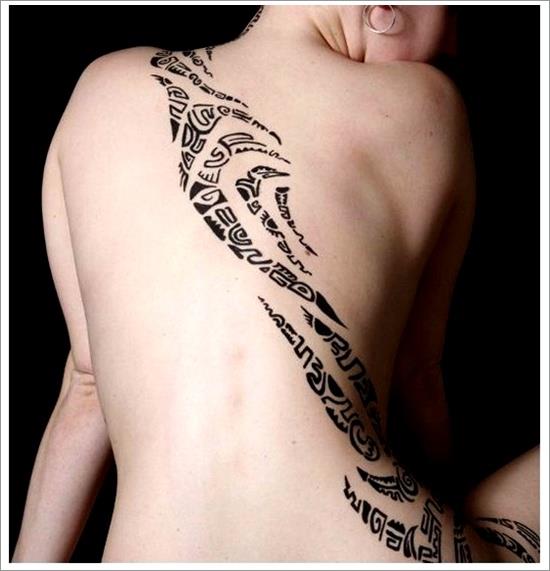
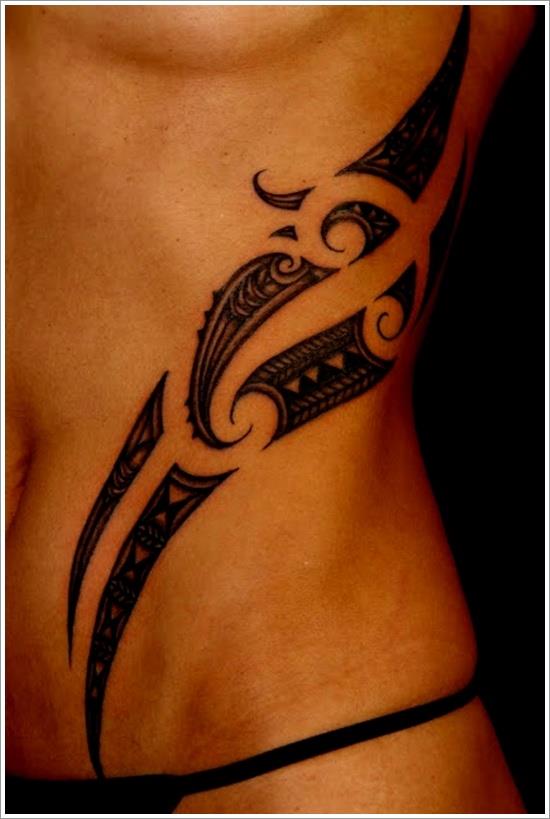
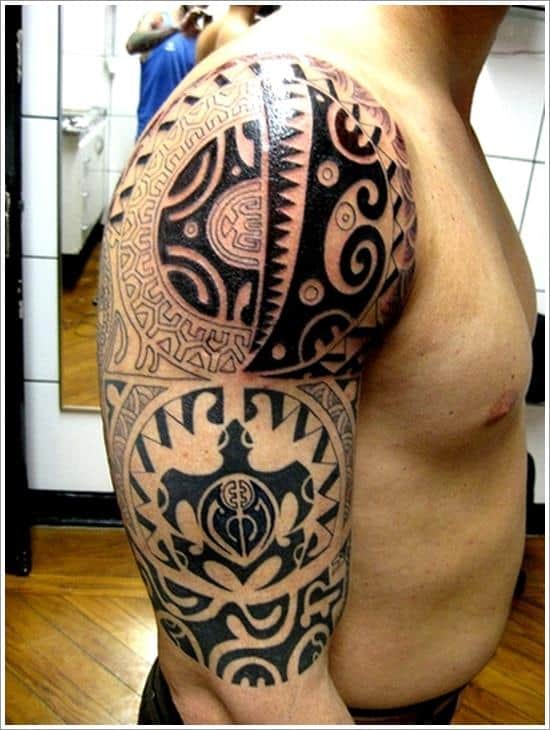
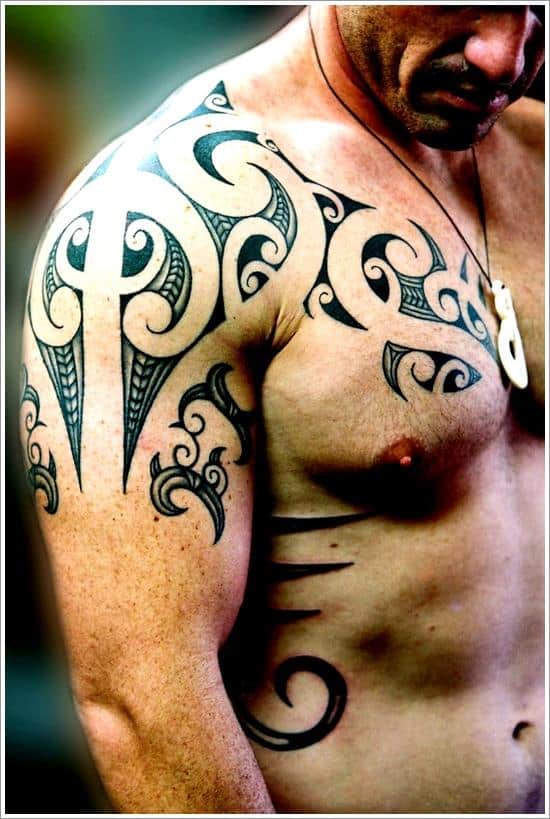



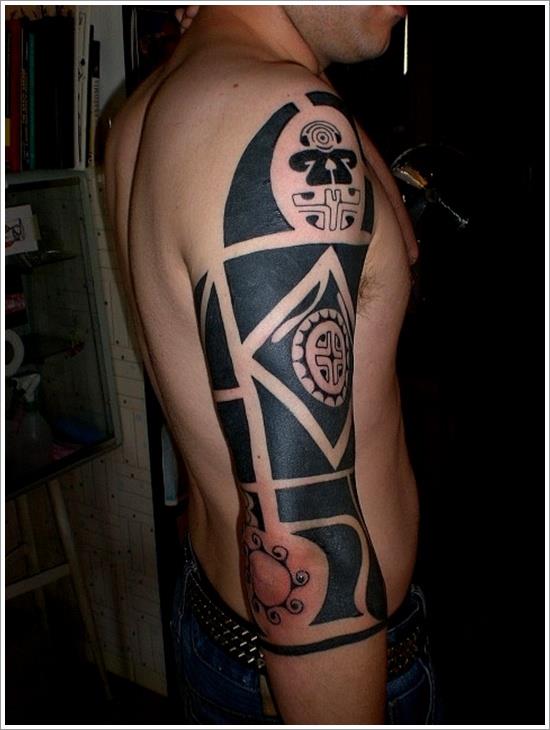



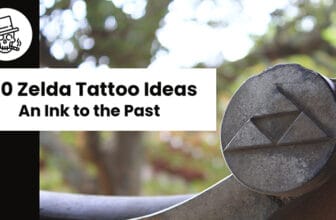


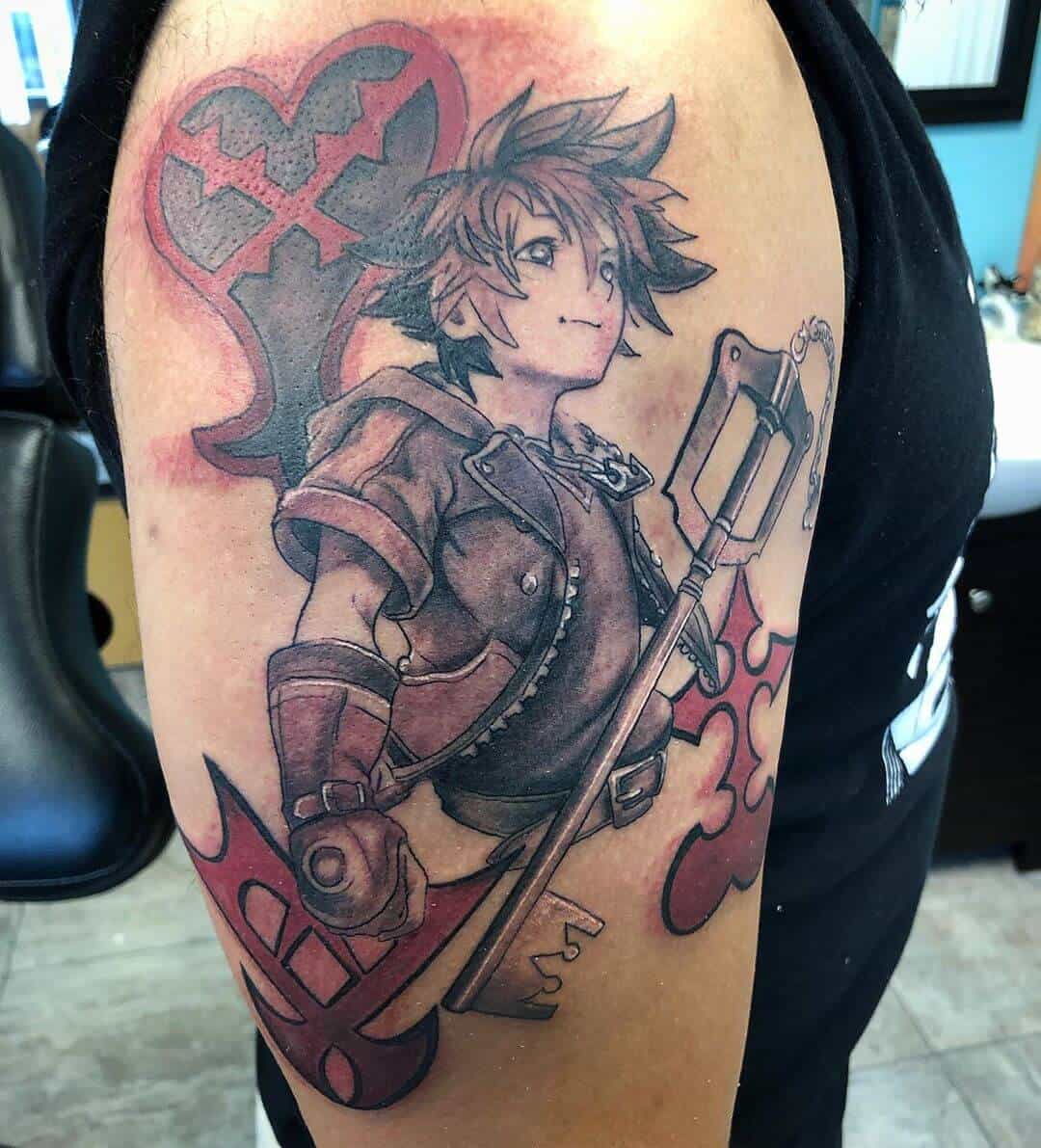

Excellent article! thank you for sharing!
Are those patterns the only ones that exist? if not, where can I find more listed?
Thank you